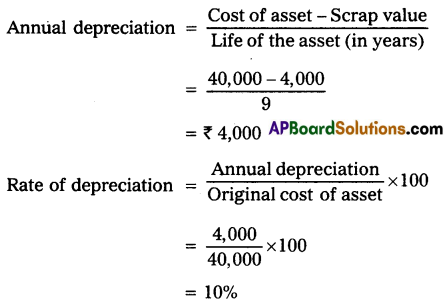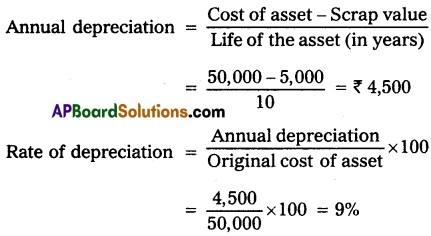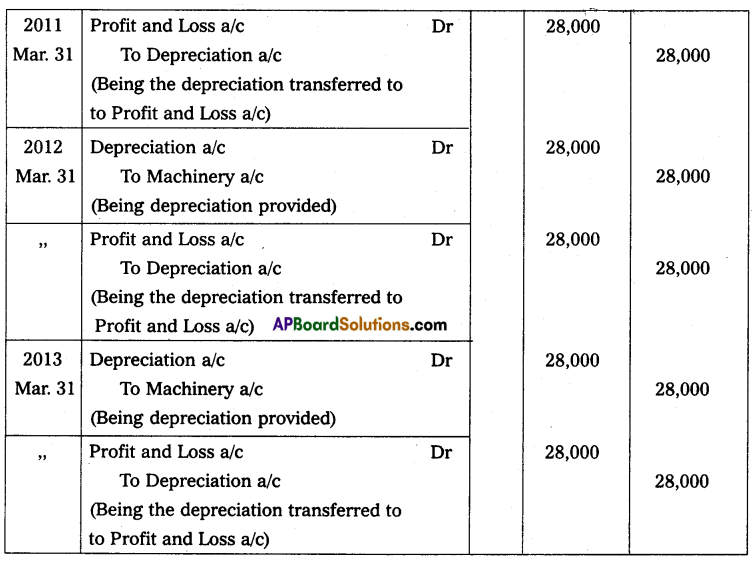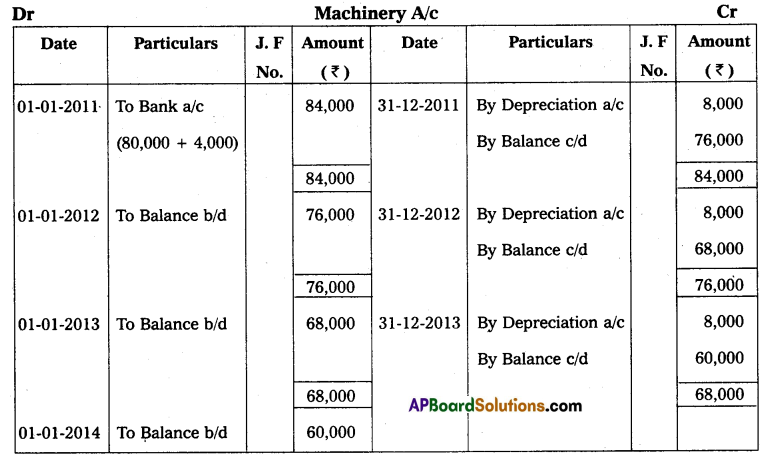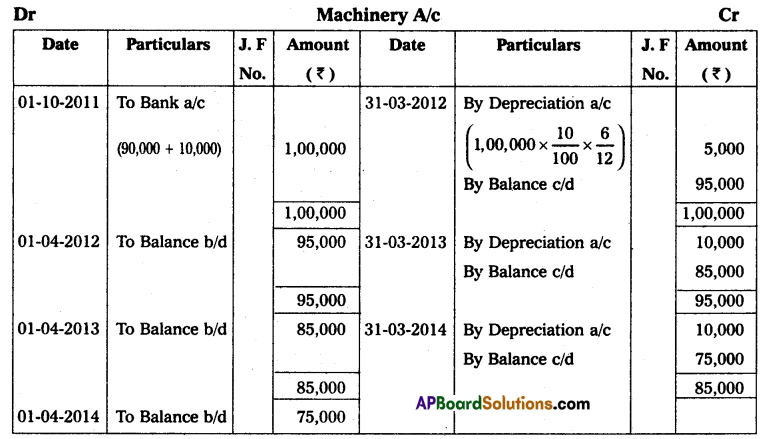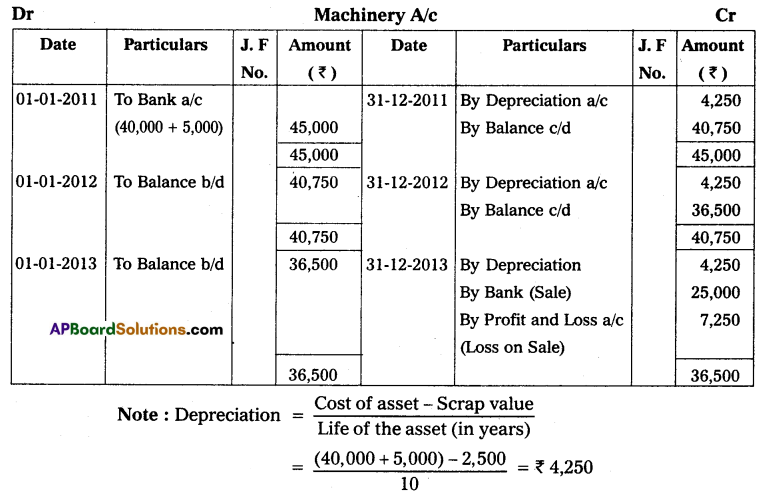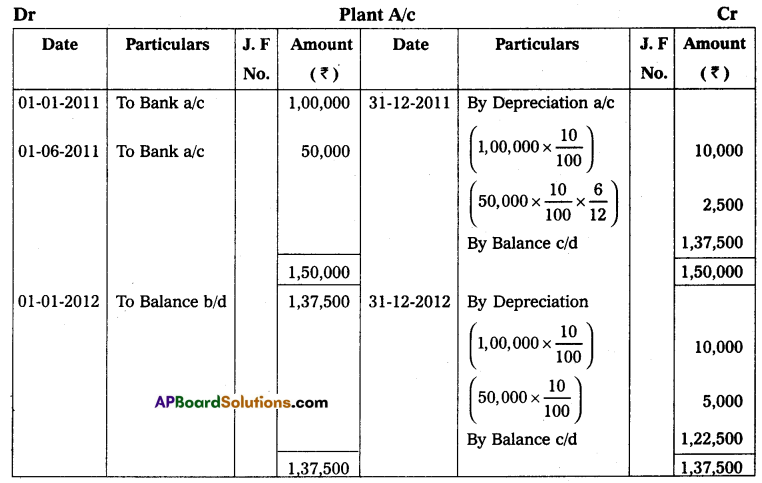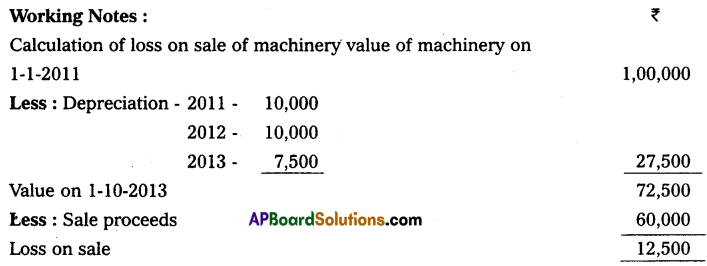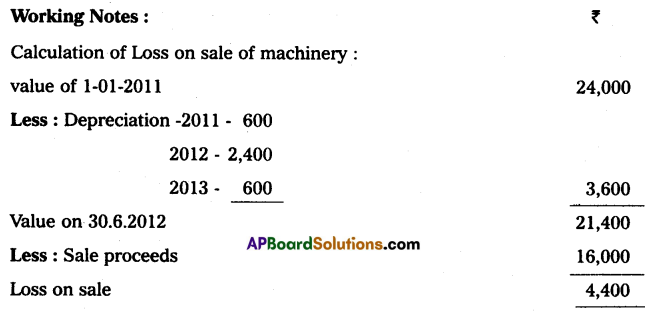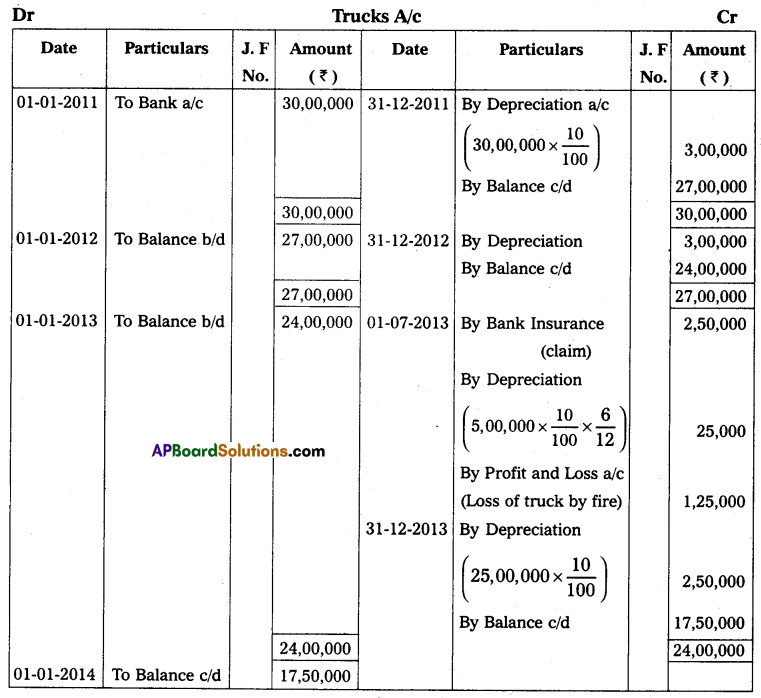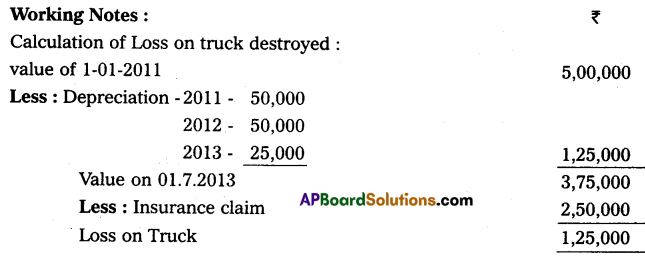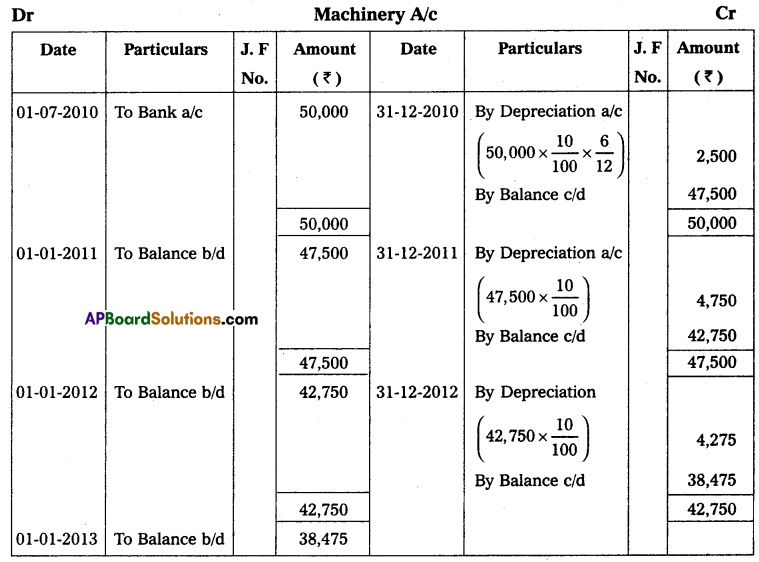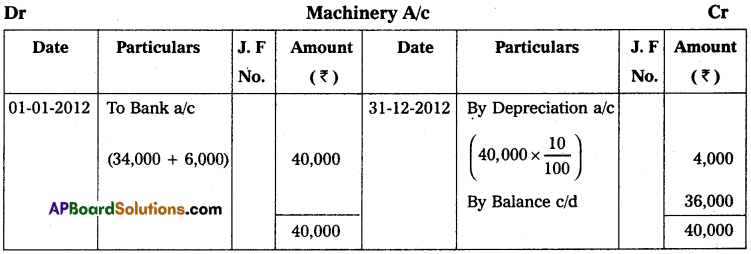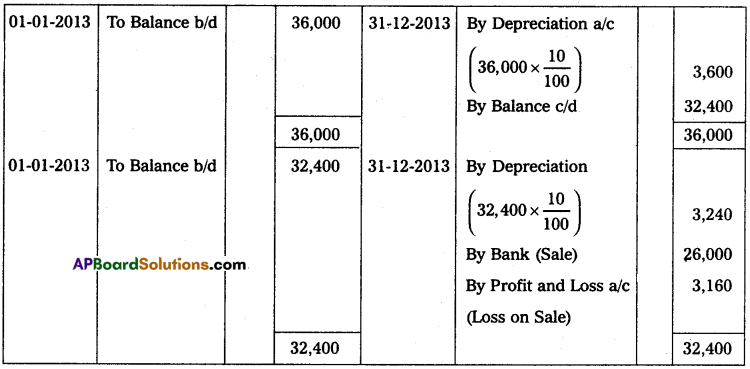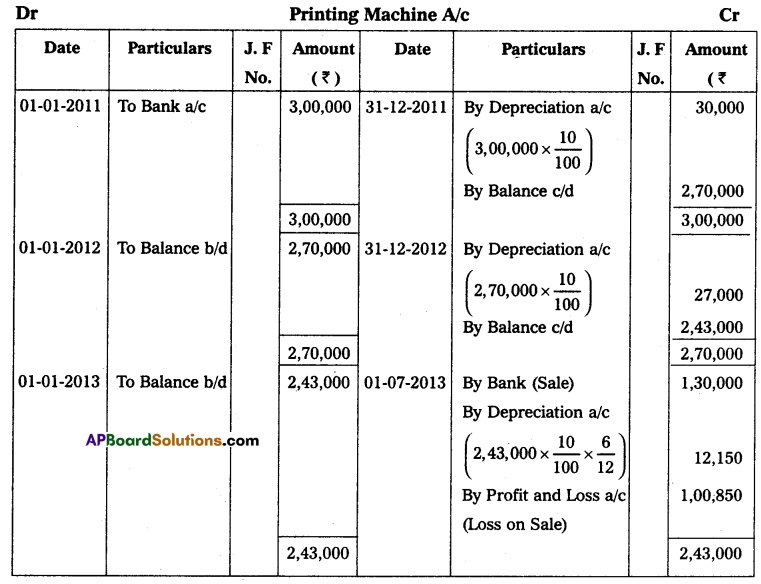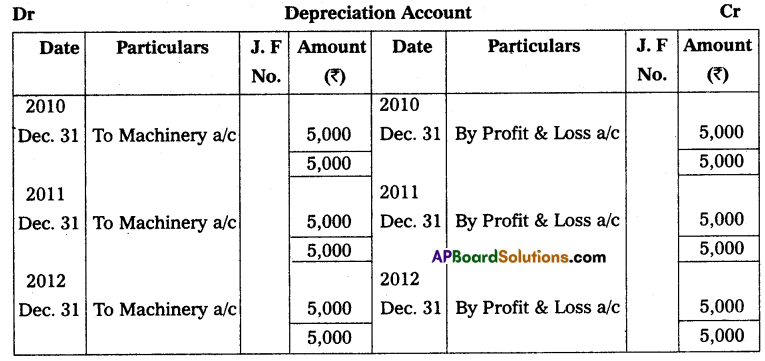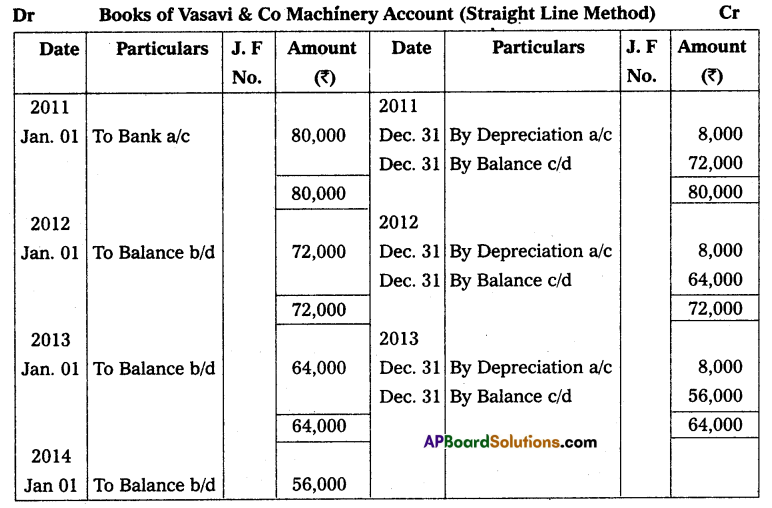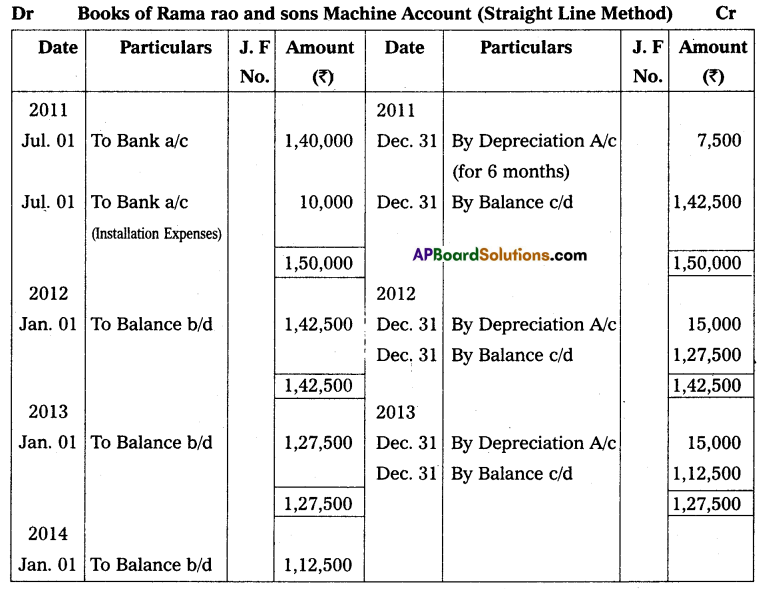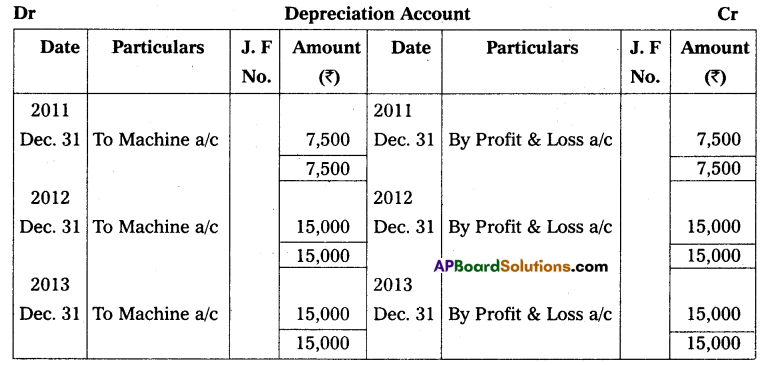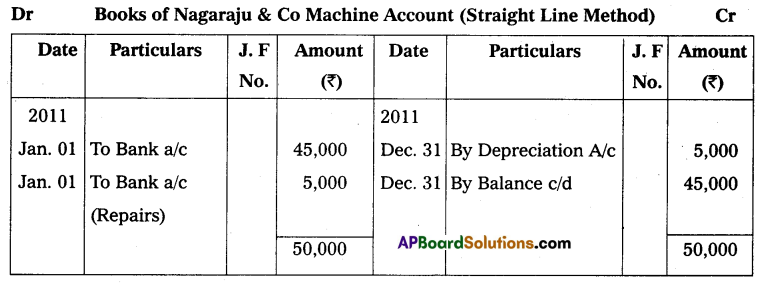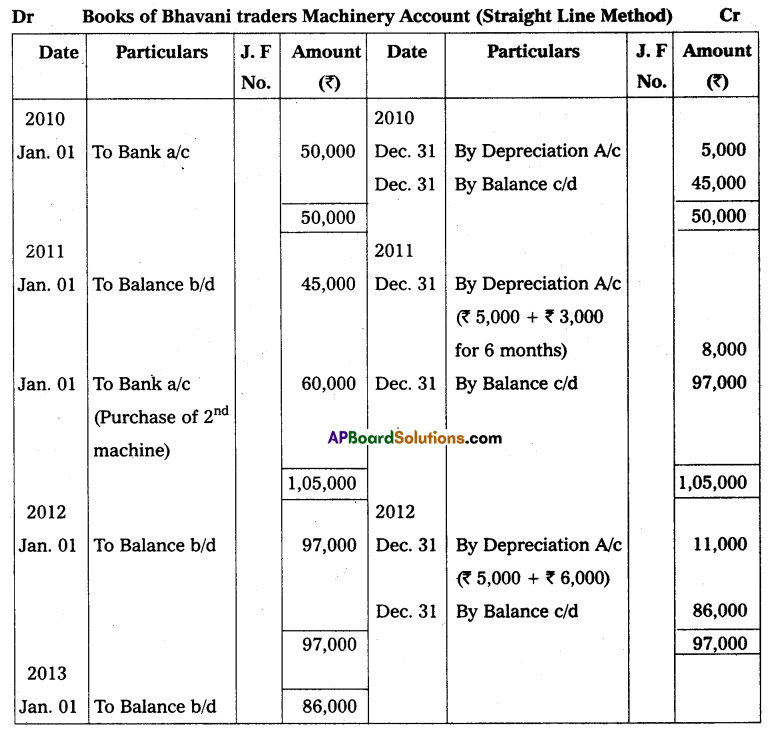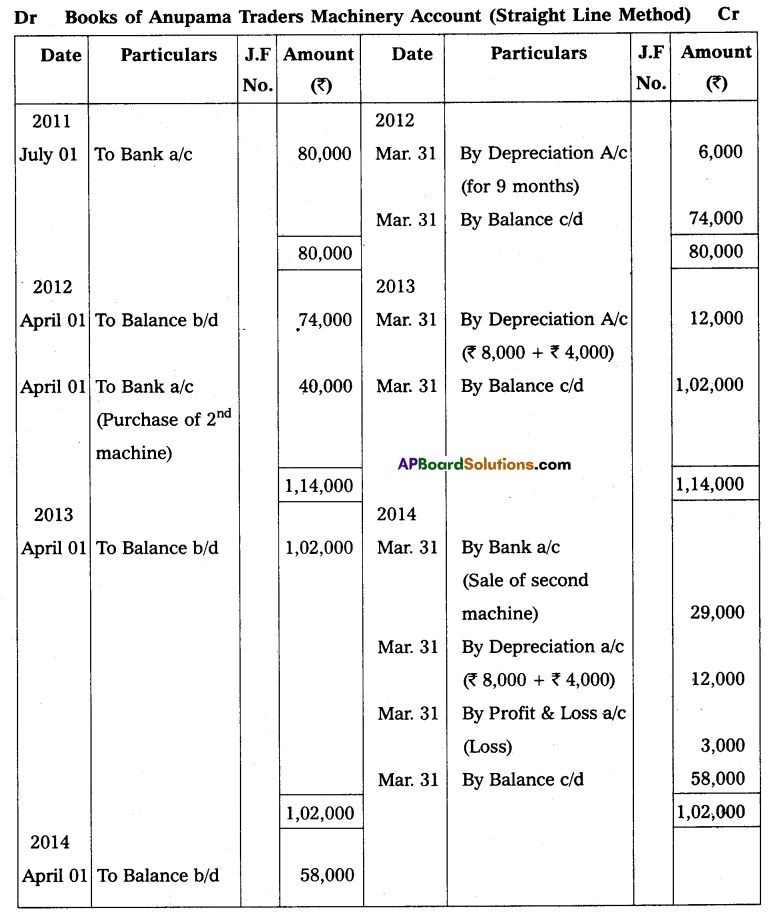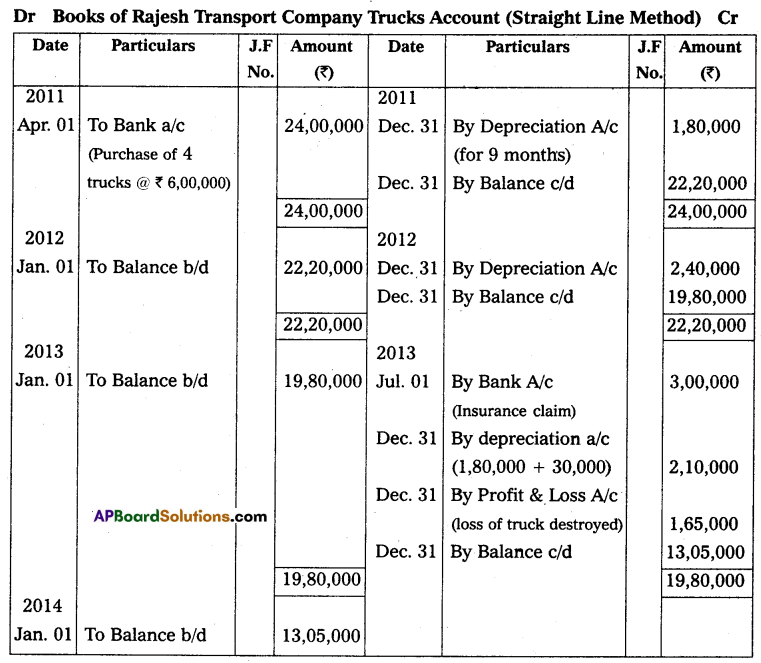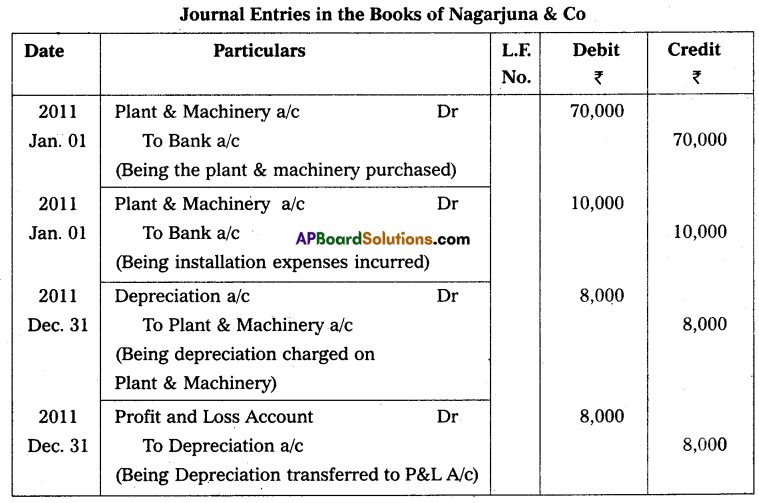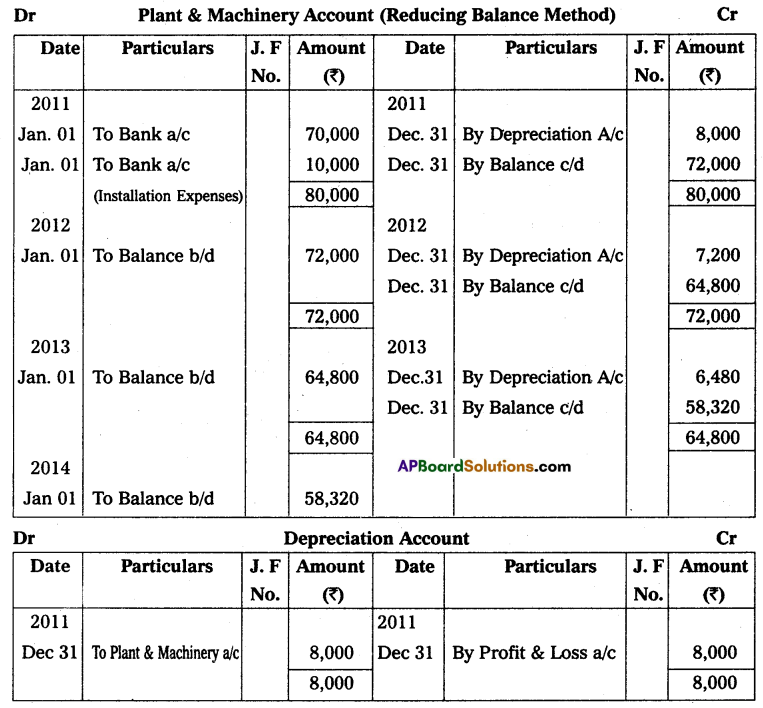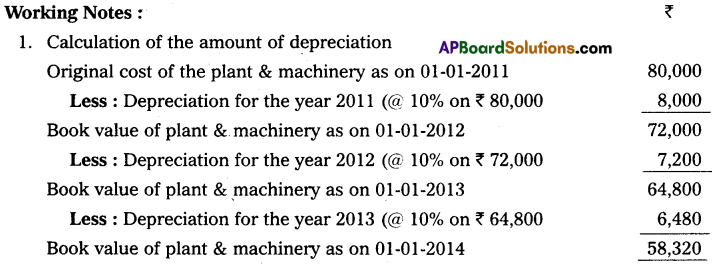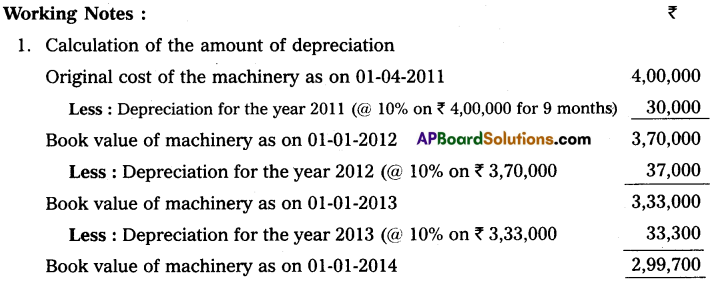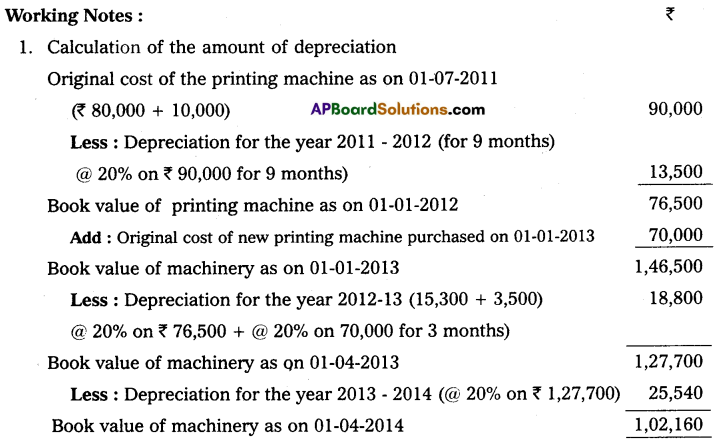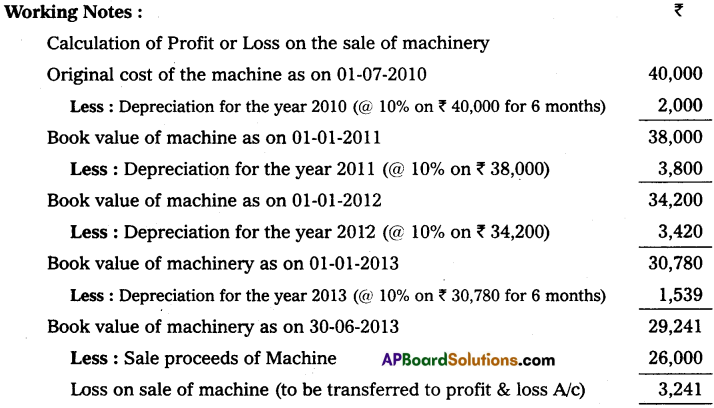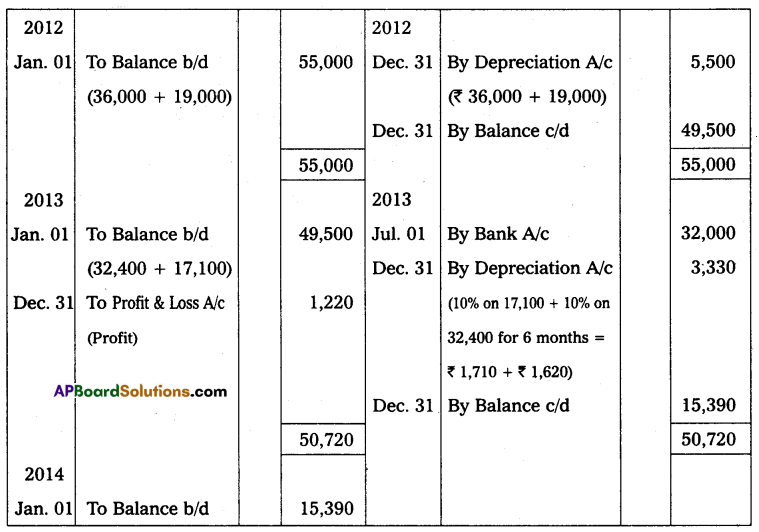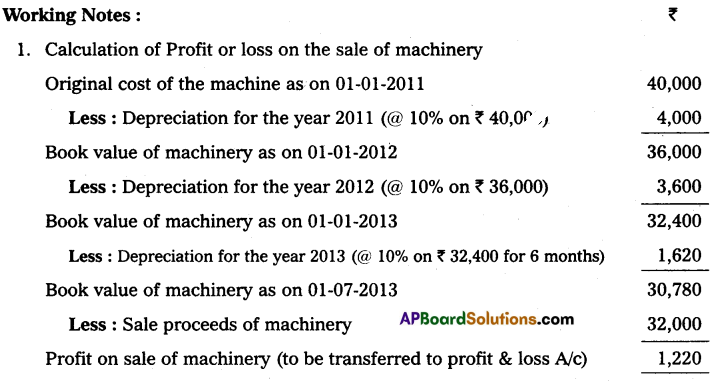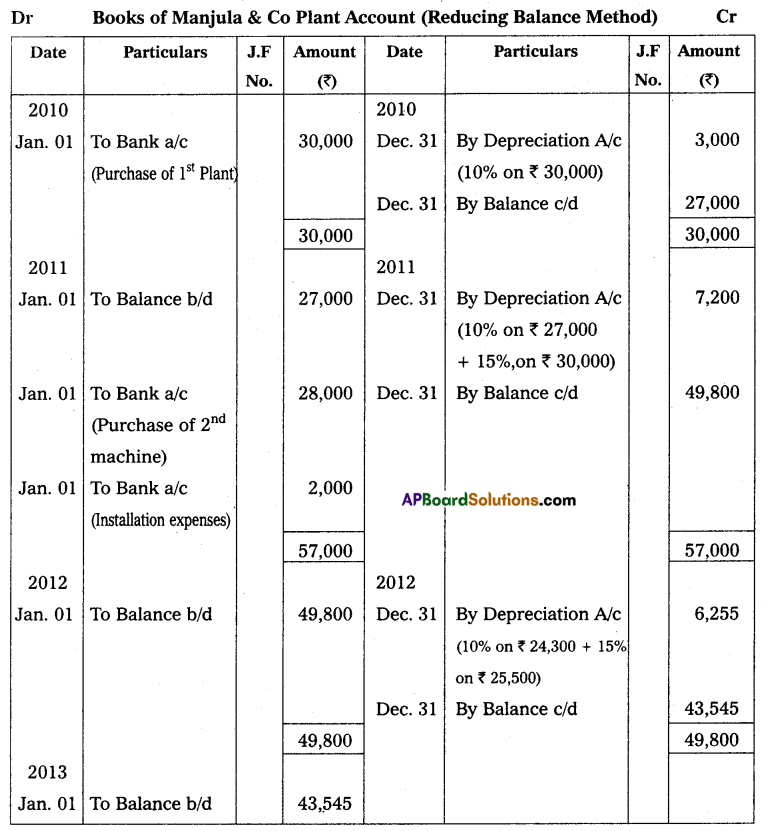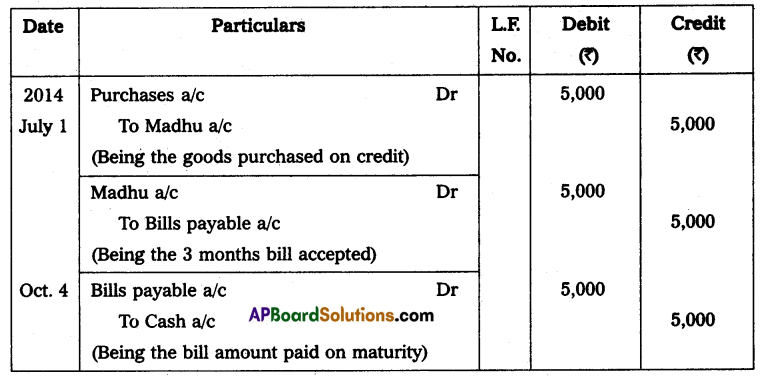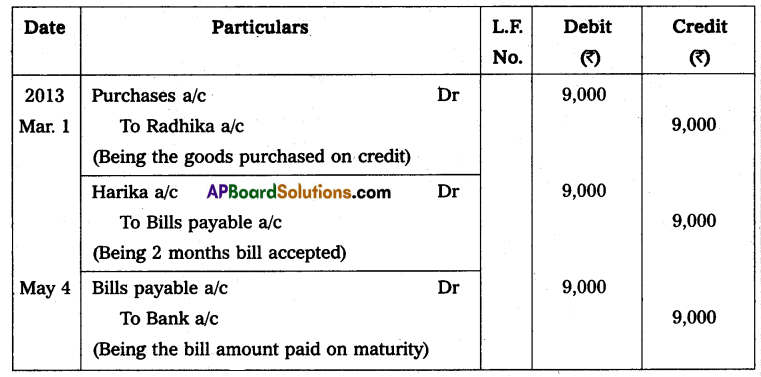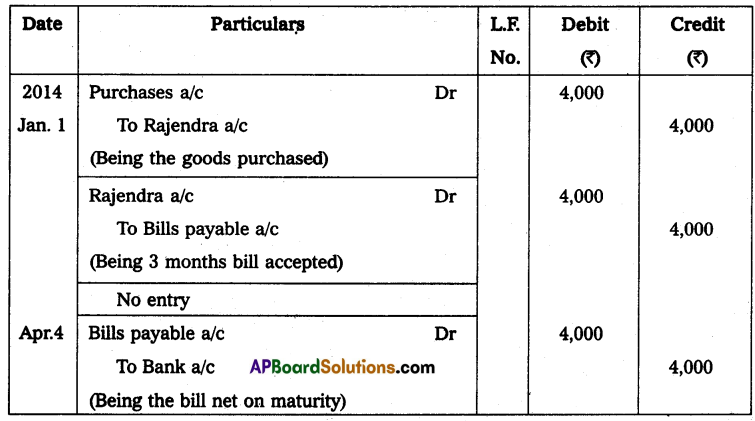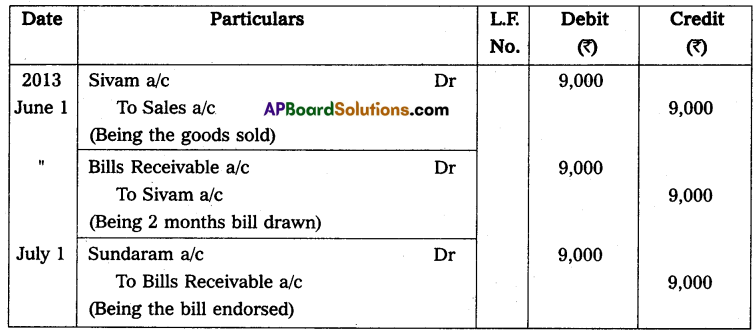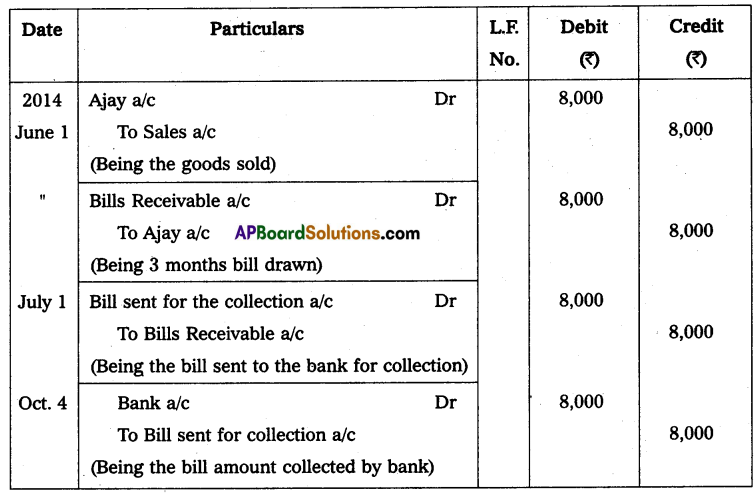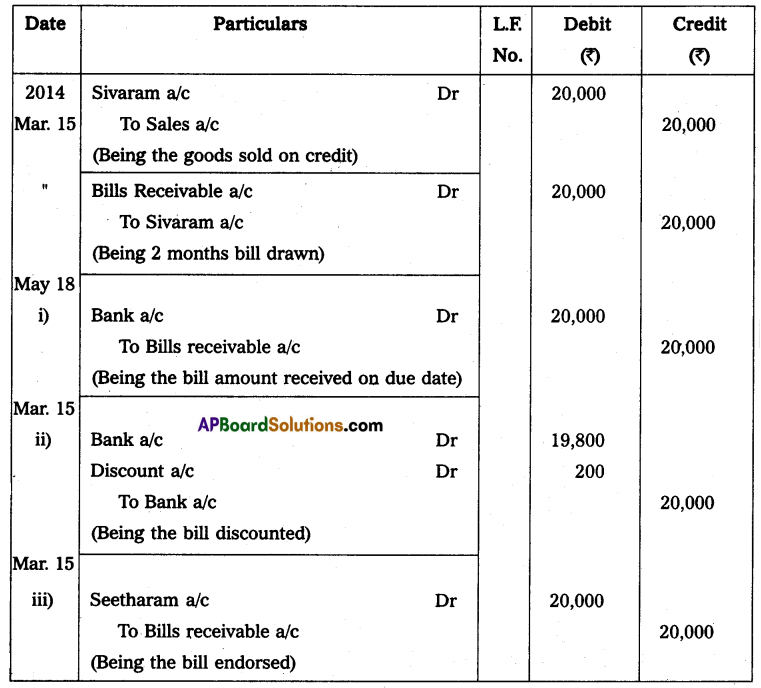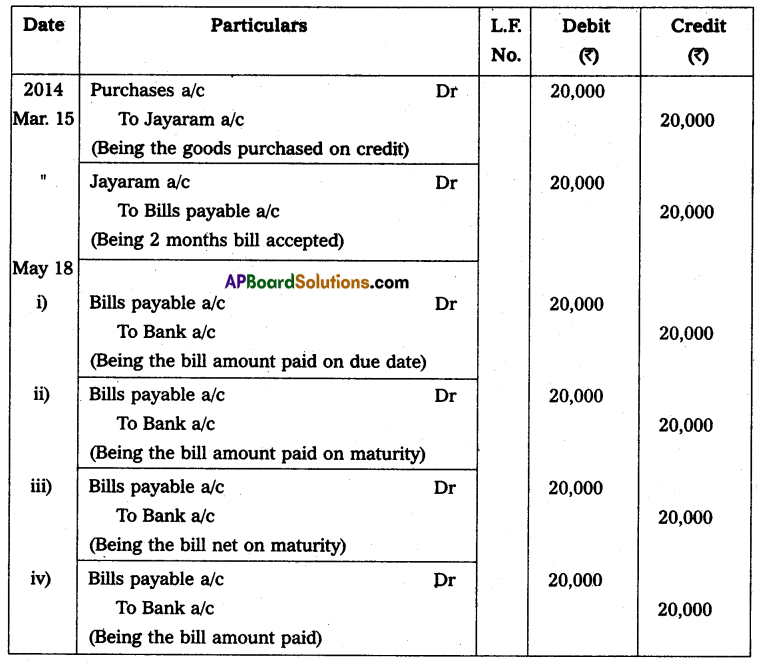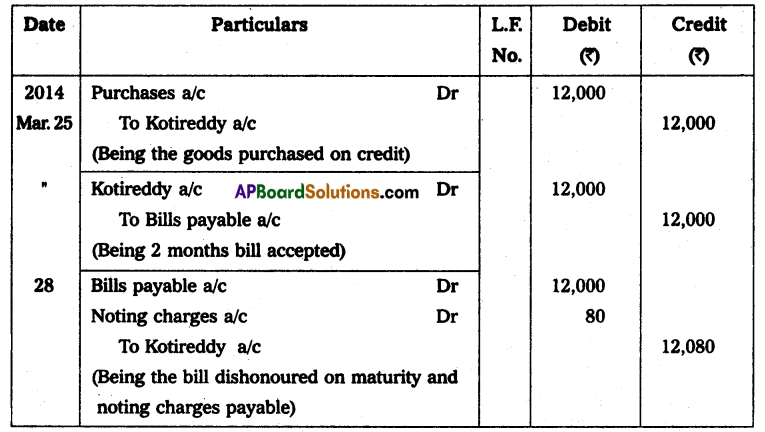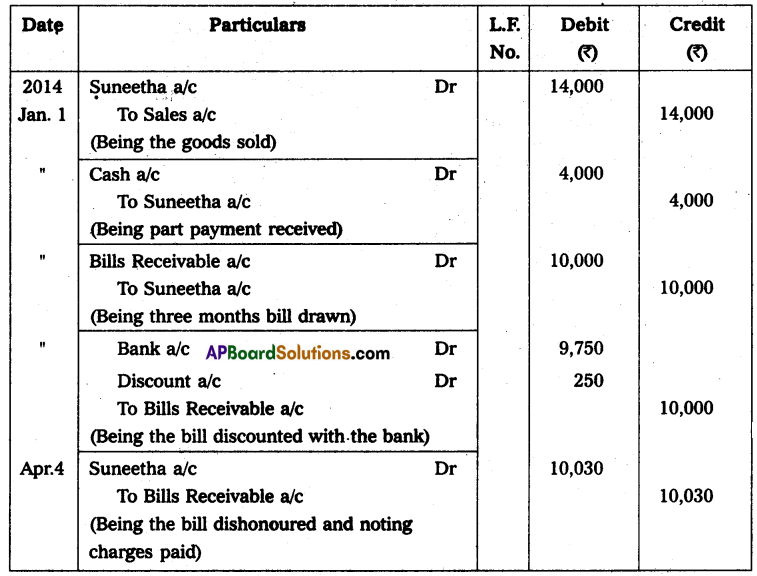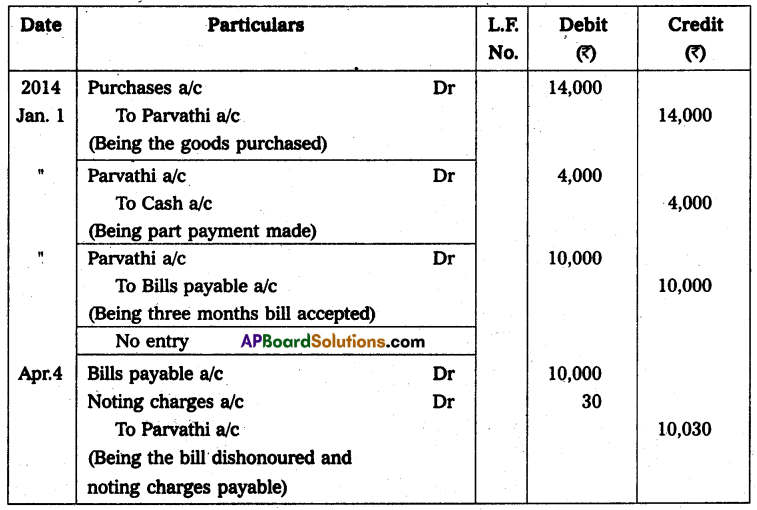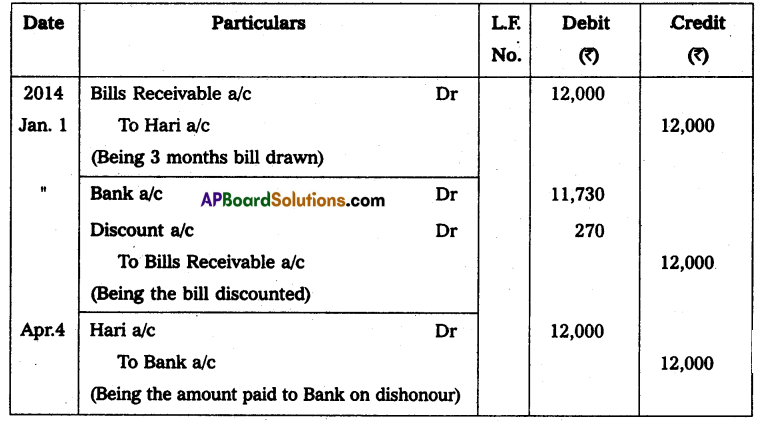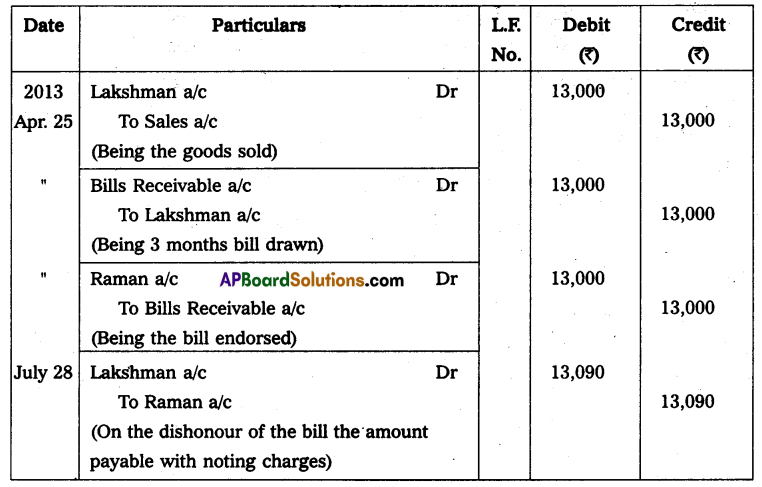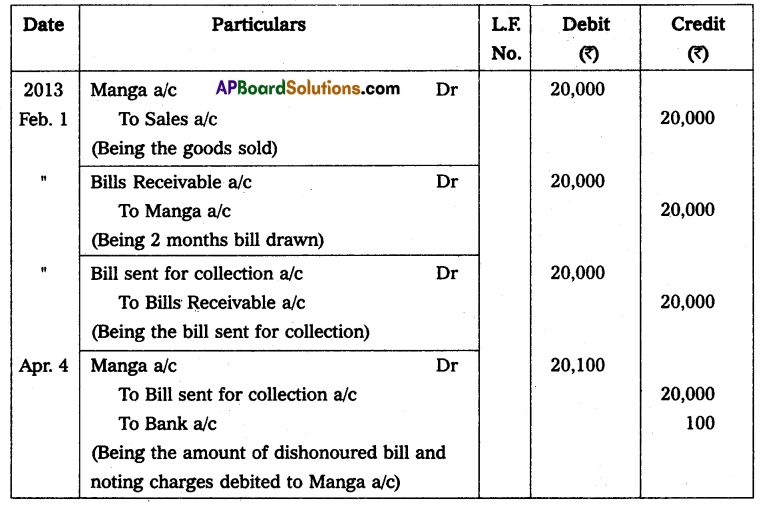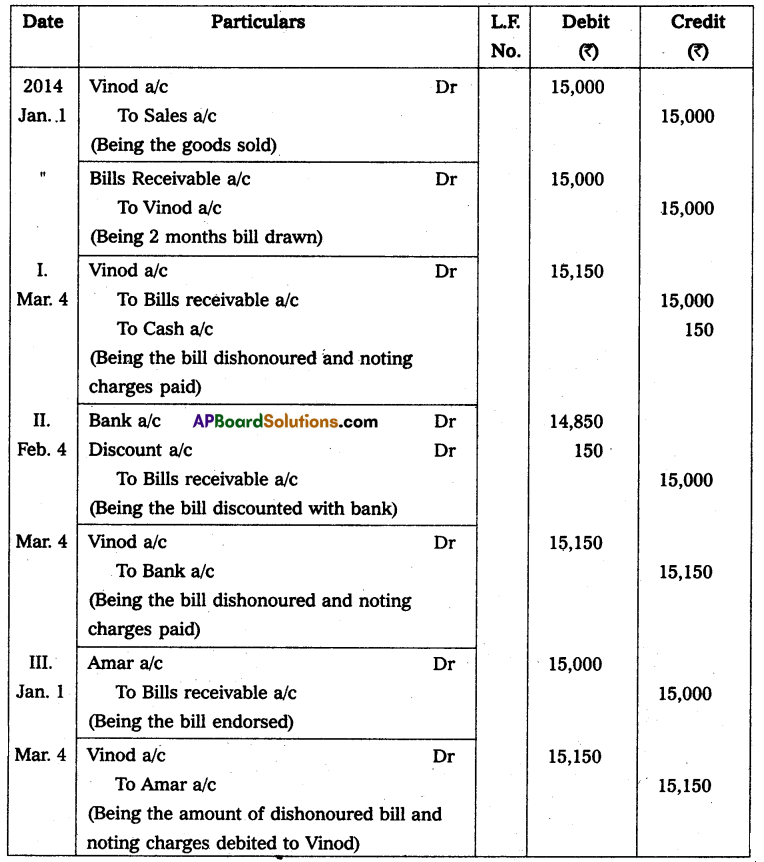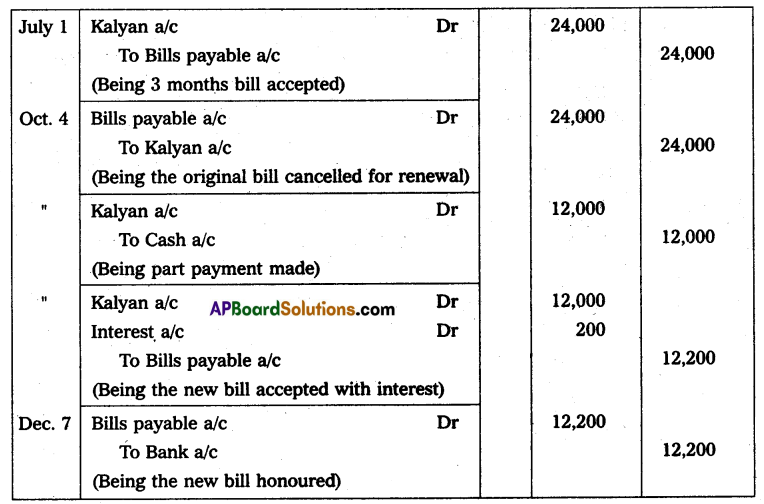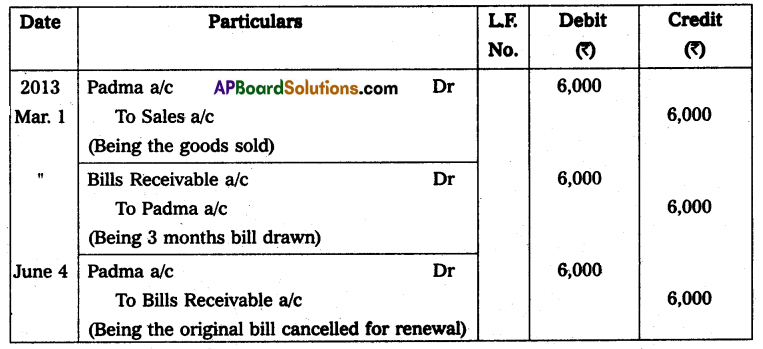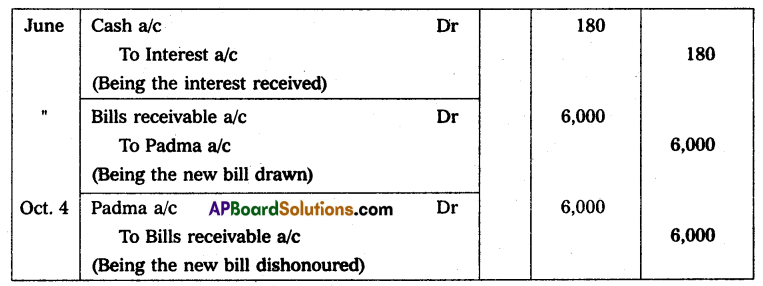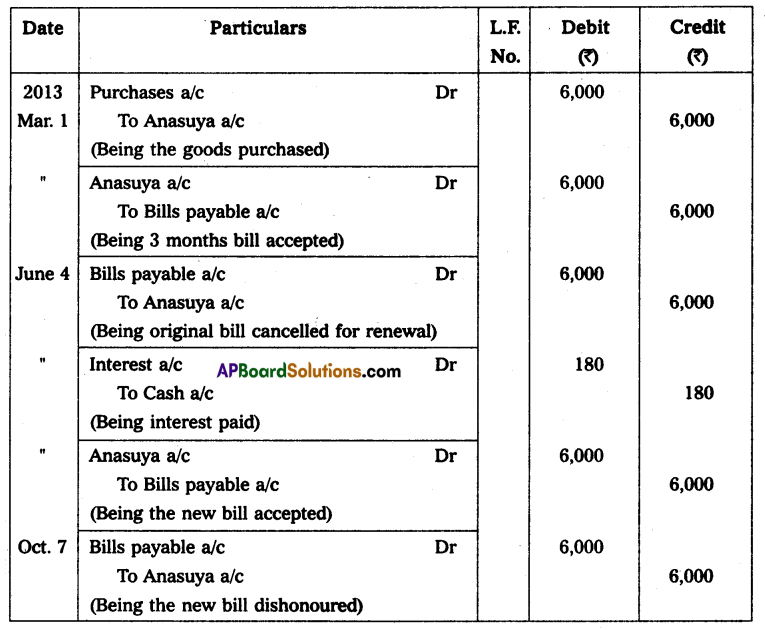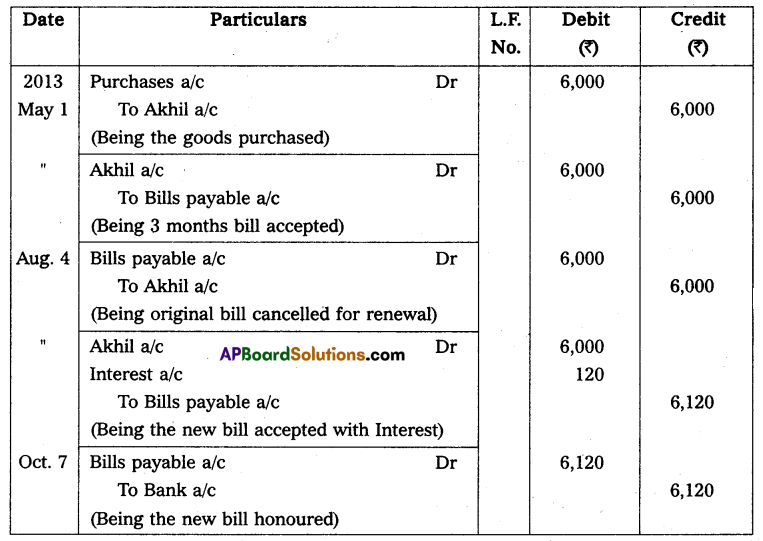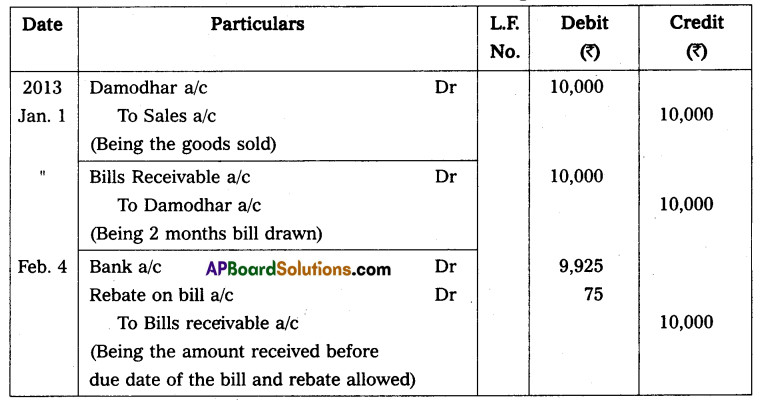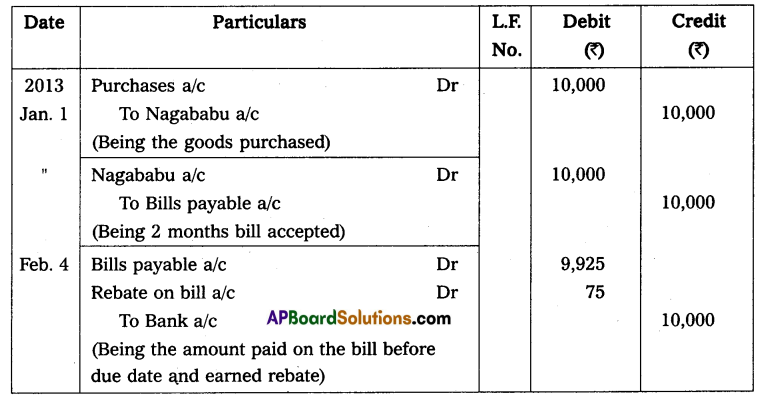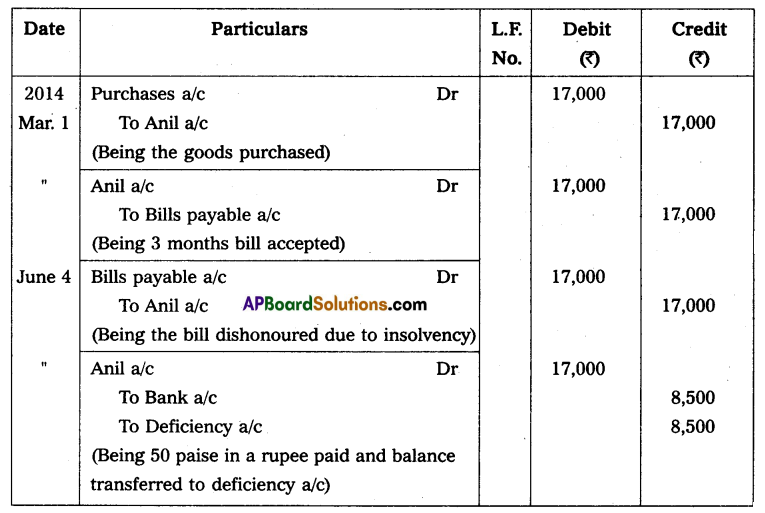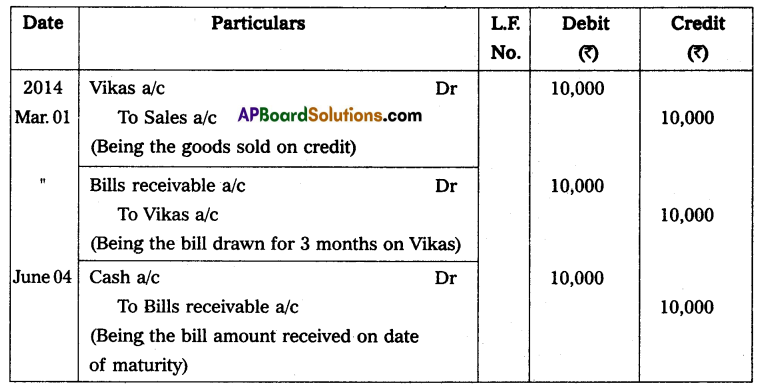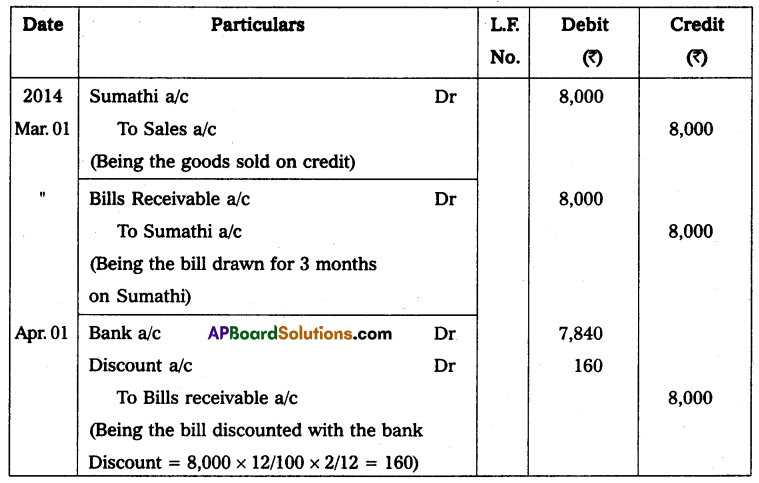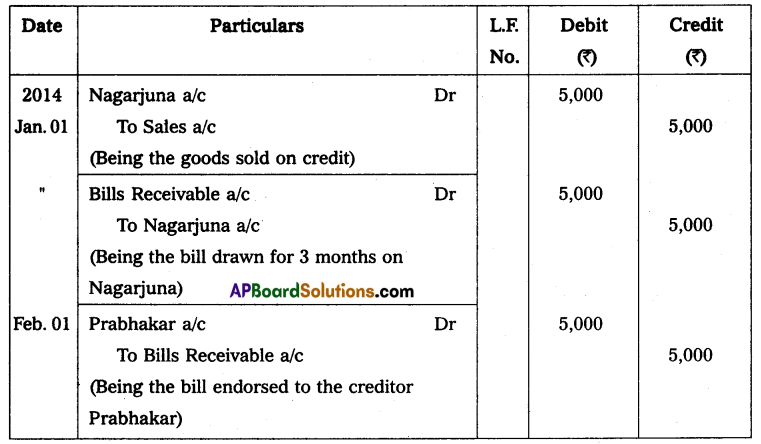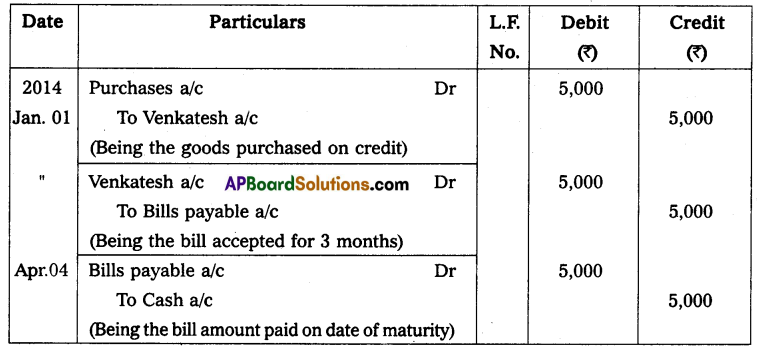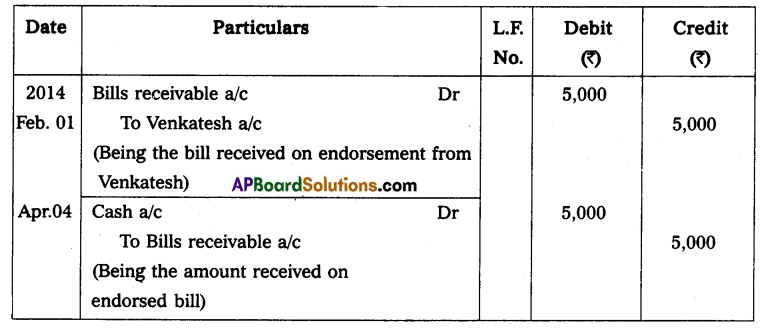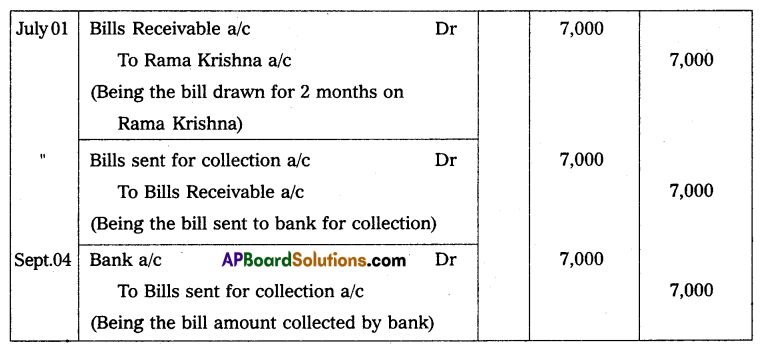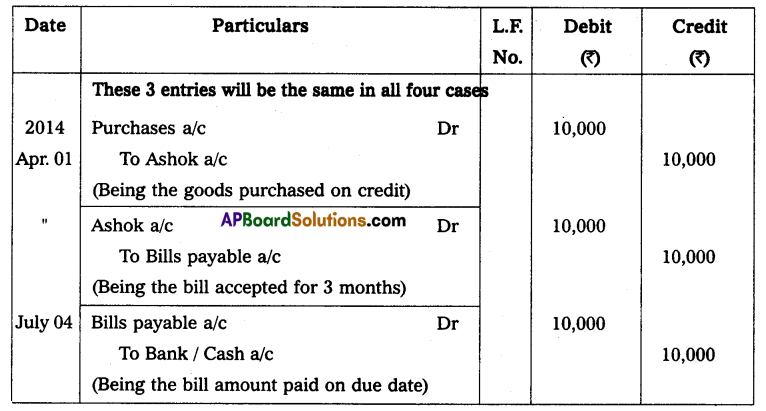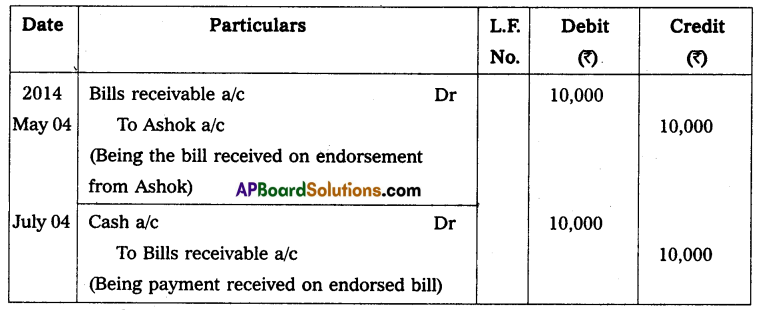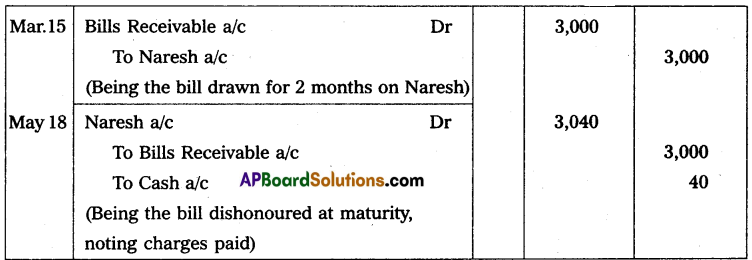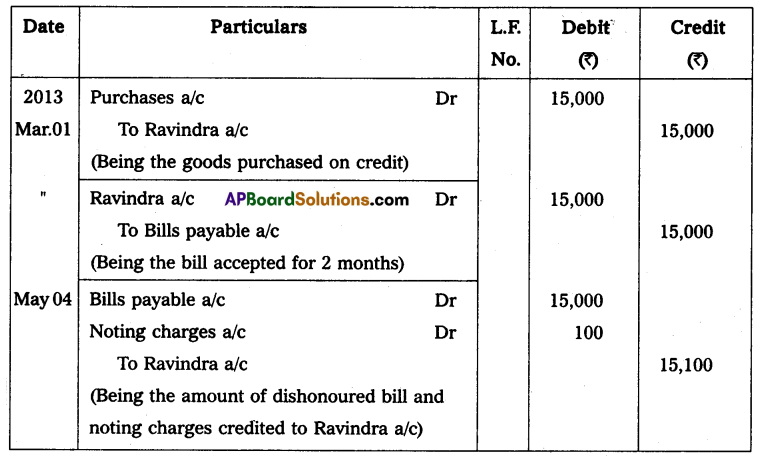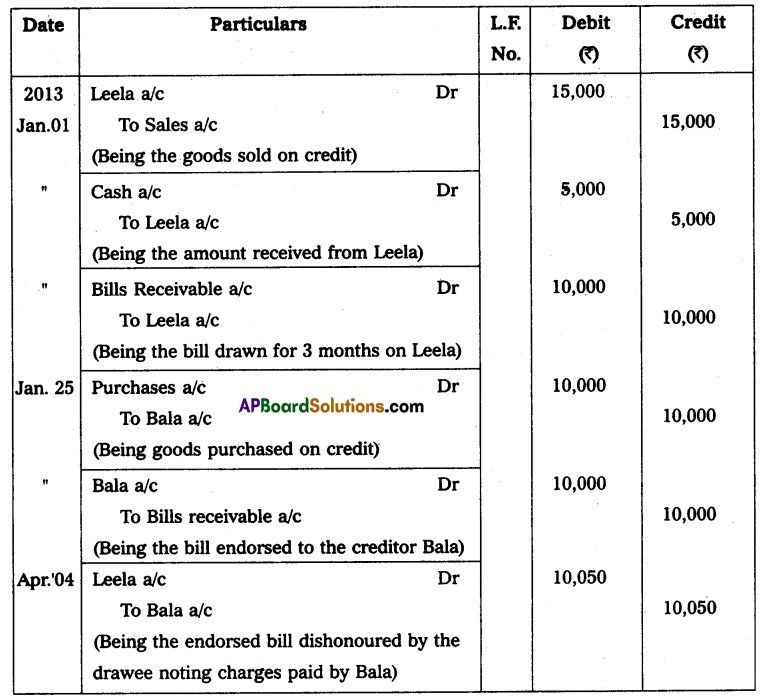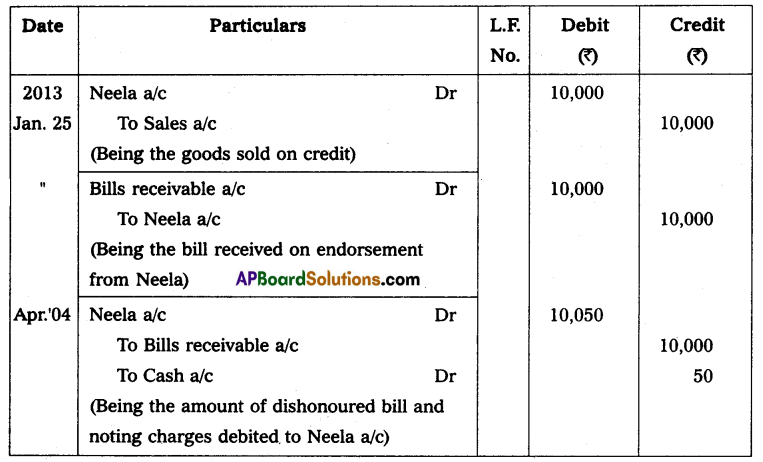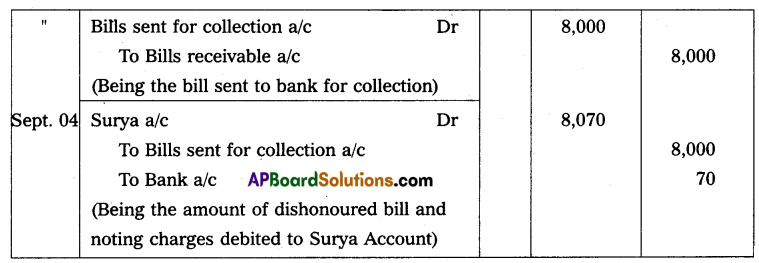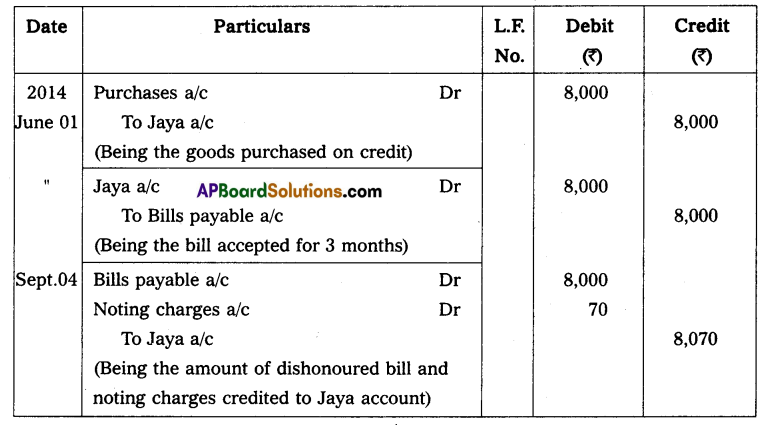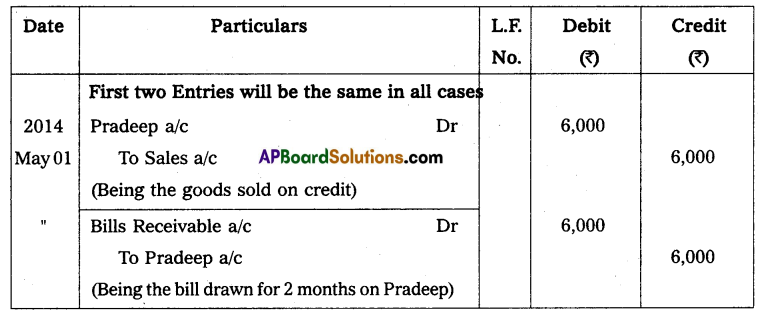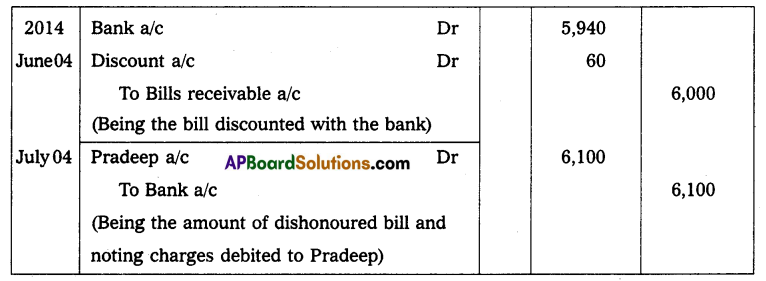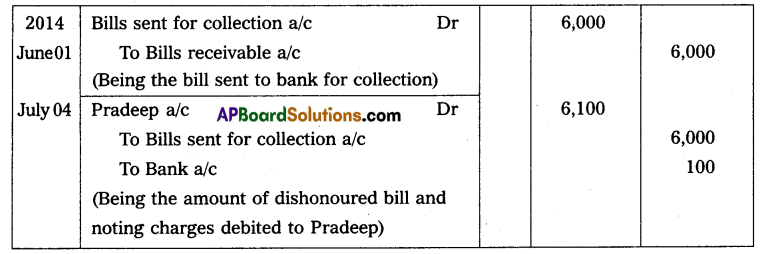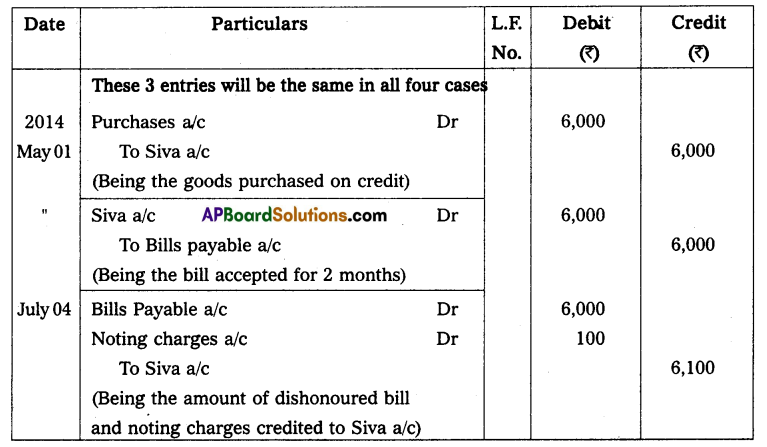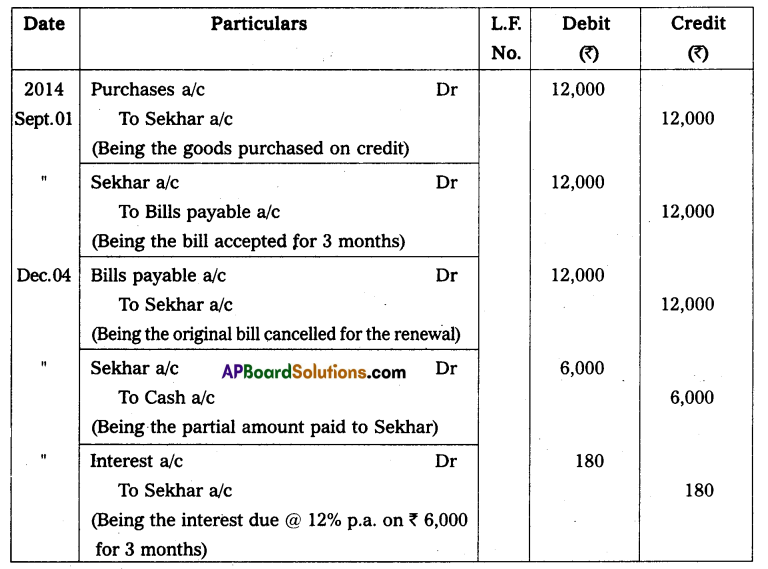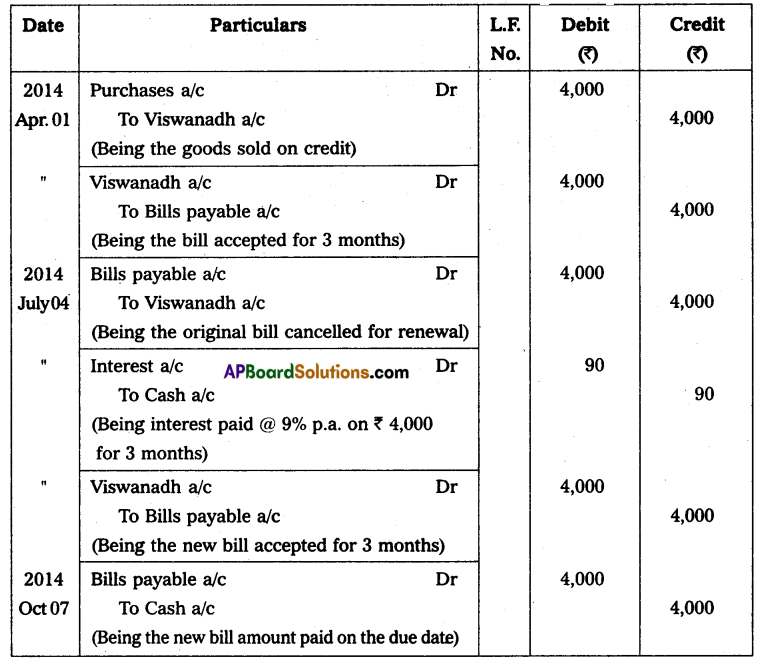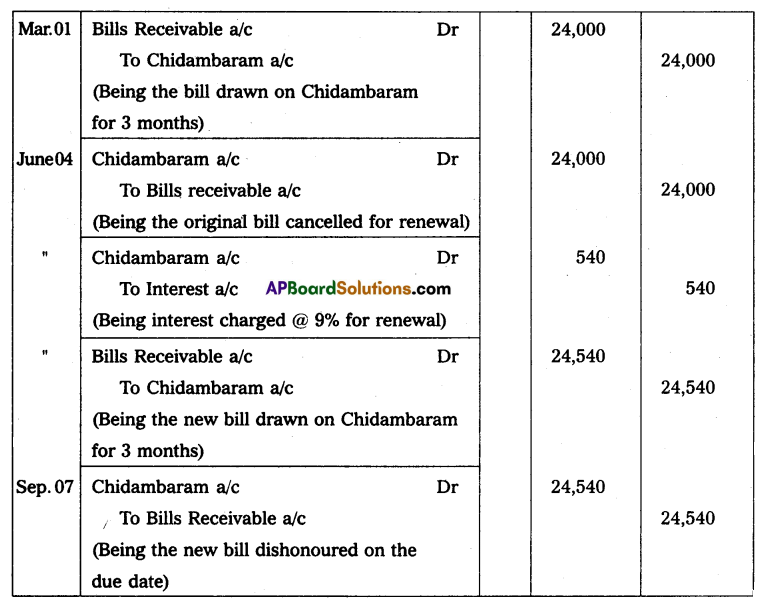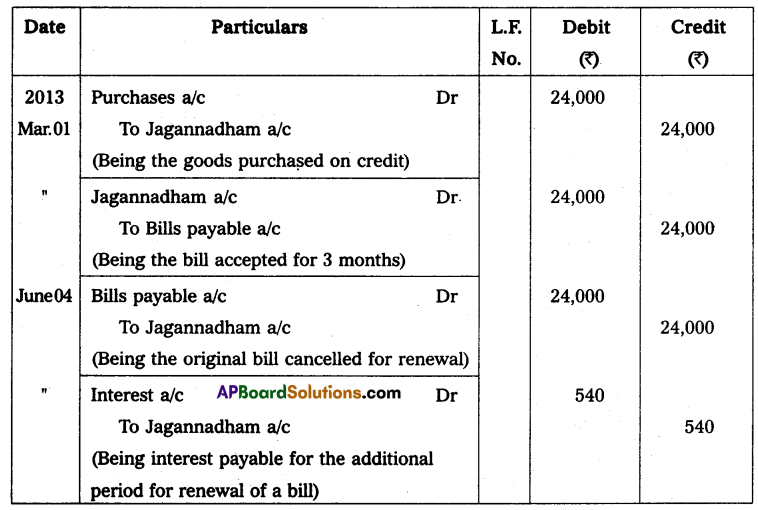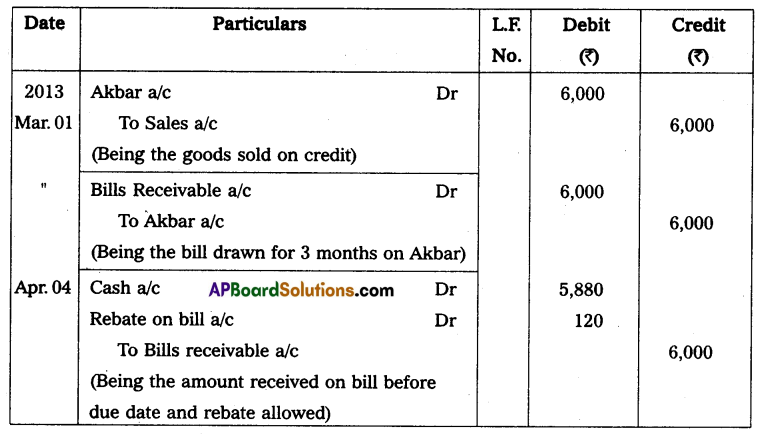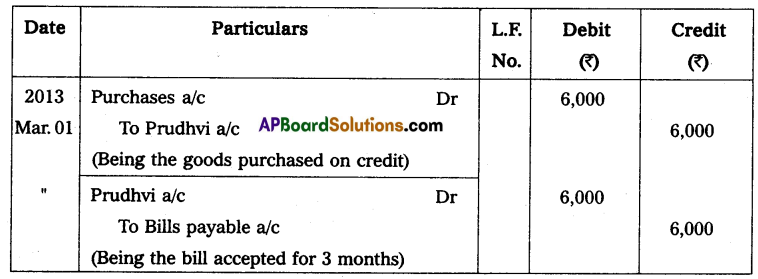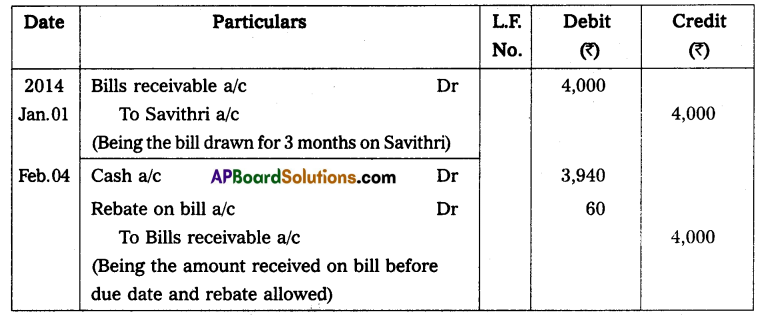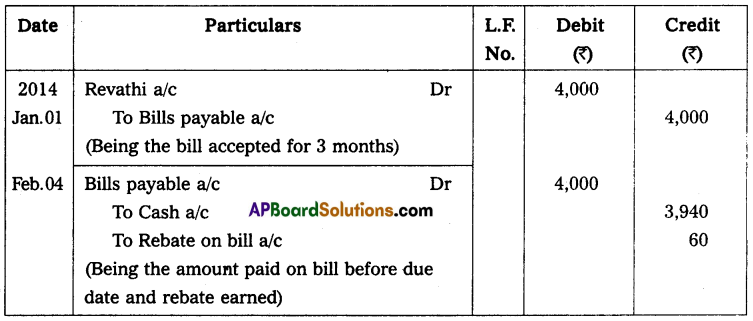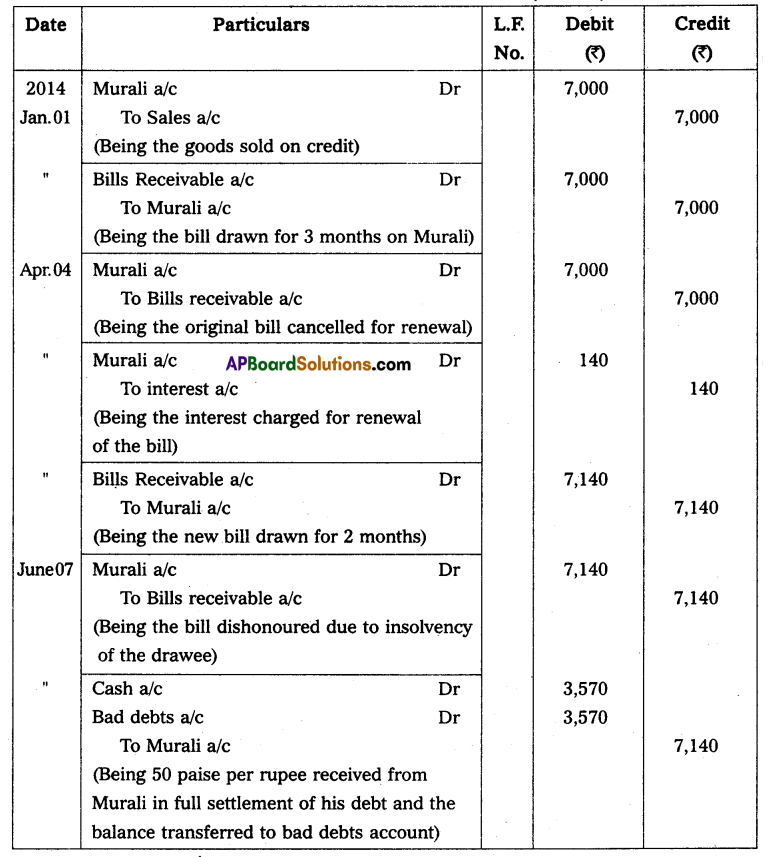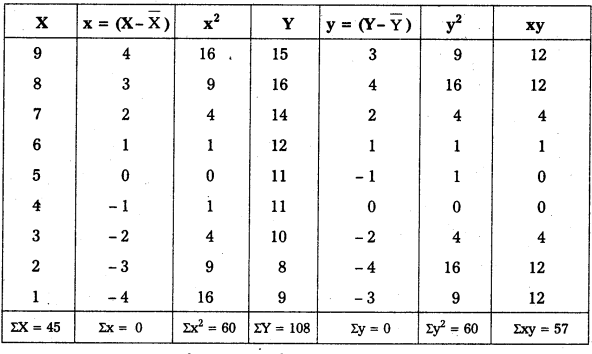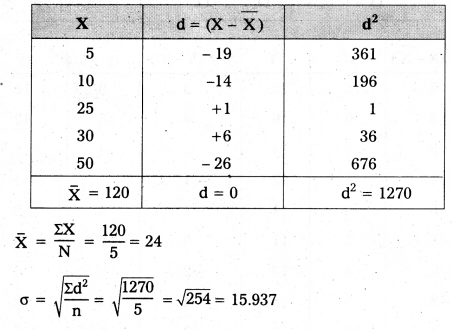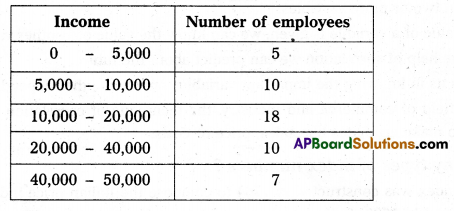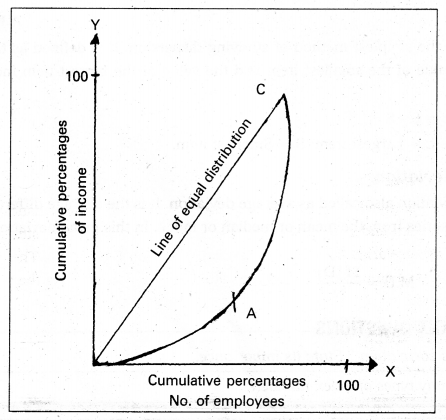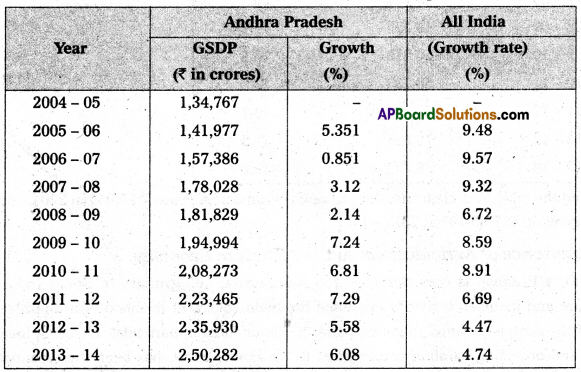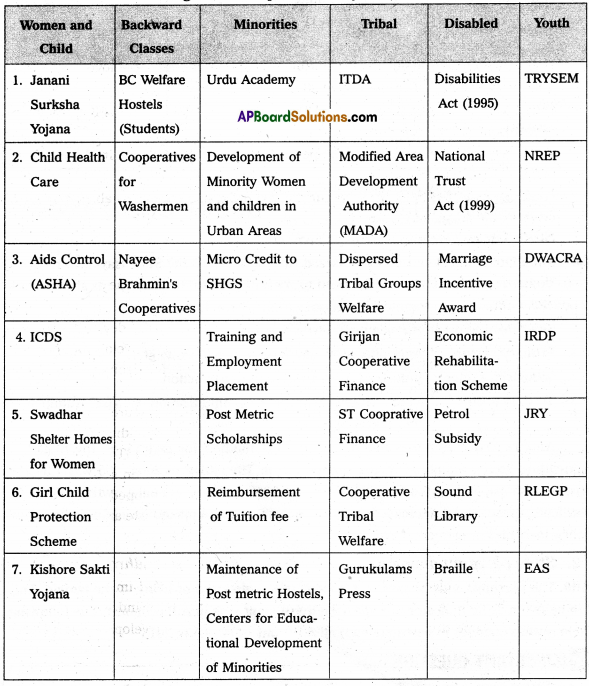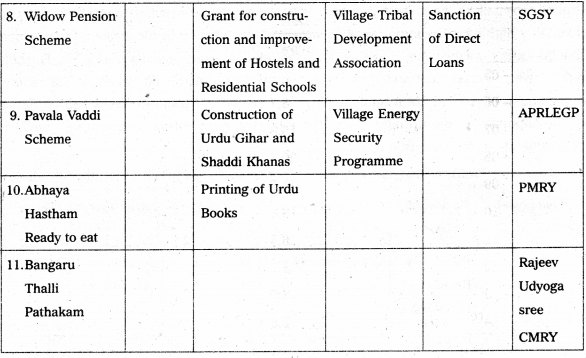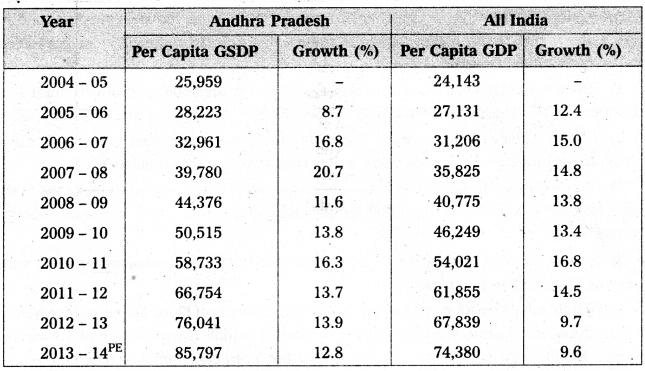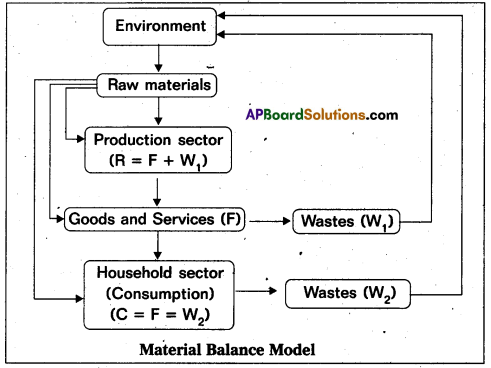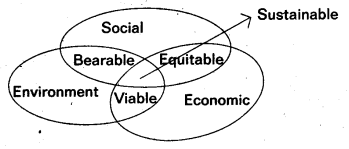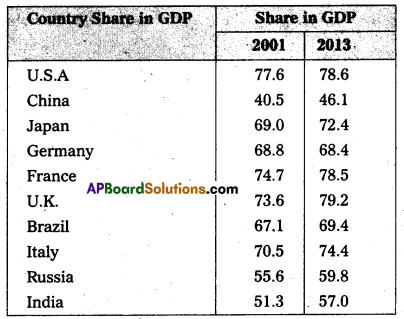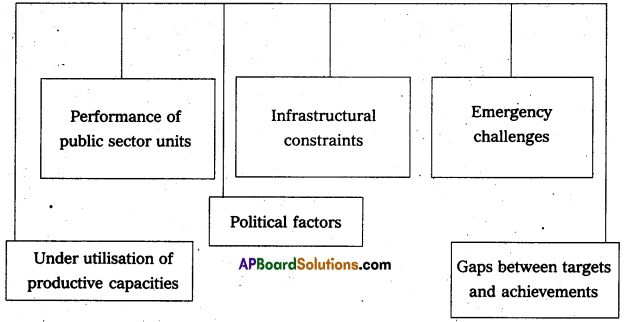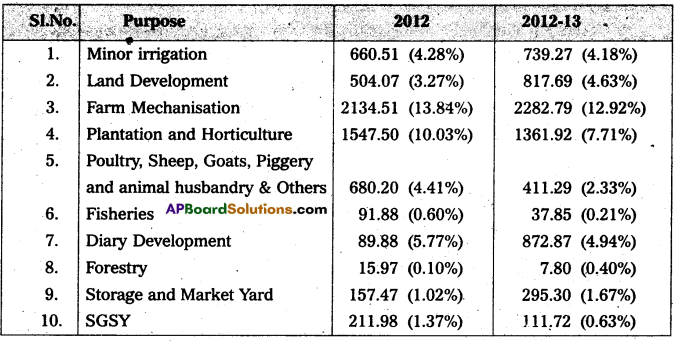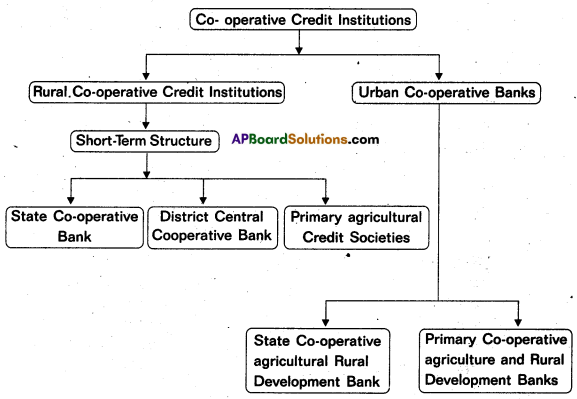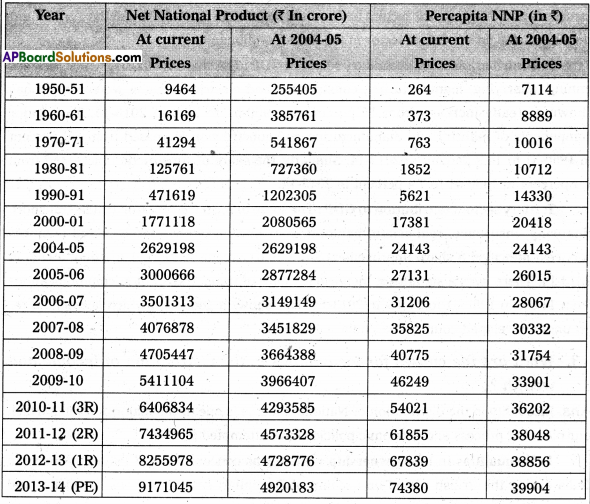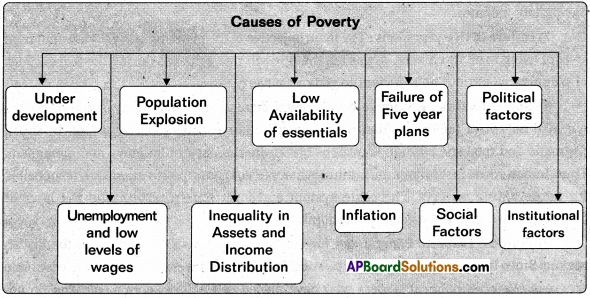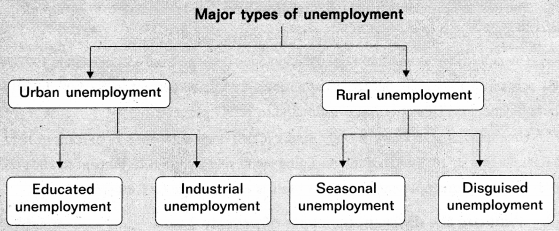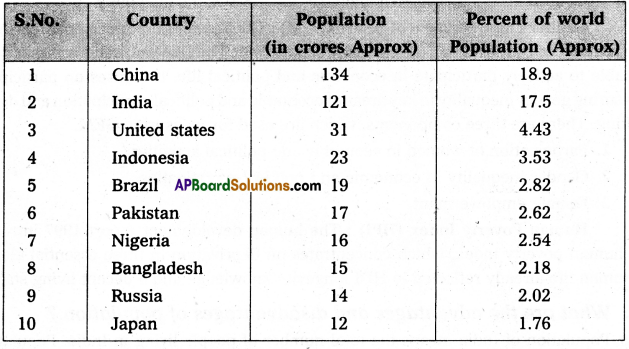Andhra Pradesh BIEAP AP Inter 2nd Year Accountancy Study Material 3rd Lesson Consignment Textbook Questions and Answers.
AP Inter 2nd Year Accountancy Study Material 3rd Lesson Consignment
Essay Questions
Question 1.
What do you mean about consignment? Explain the differences between consignment and sale.
Answer:
Consignment means sending goods to another person. In the case of consignment, goods are sent by the owner of the goods to the agent for the purpose of sale. The ownership of the goods remains with the sender. The agent sells the goods on behalf of the sender according to his instructions. The sender of the goods is known as the consignor and the agent is called the consignee.
Differences between consignment and sale
| Basis | Consignment | Sale |
| 1. Ownership of goods | The ownership of goods remains with the consignor and the possession is transferred to the consignee. | Ownership and possession of goods are transferred to the buyer immediately. |
| 2. Parties | Two parties involved are known as consignors and consignees. | Two parties involved are known as the buyer and seller. |
| 3. Relation between parties | The relation between them is that of a principal and agent which continues for long period, till it is ended. | The relationship between them is between buyer and seller, which ends immediately after the delivery and payment of goods. |
| 4. Risk | The risk of loss or damage is of the consignor. | The risk passes with ownership to the buyer. |
| 5. Consideration | The consignee sells goods for consideration. | The goods are sold for profit against the price. |
| 6. Expenses | The expenses are borne by the consignor. | After-sales, the expenses are borne by the buyer. |
| 7. Account sales | Consignee sends consignor account sales from time to time. | The buyer does not need to send any account sales to the seller. |
| 8. Profit/Loss | The profit or loss on the consignment belongs to the consignor. | The profit or loss on the sales belongs to the seller. |
Question 2.
What are account sales? Give a specimen copy of account sales.
Answer:
Account sales is a document or statement sent by the consignee to the consignor from time to time. Since the consignee sells the goods on behalf of the consignor, so he has to send a proper statement either on the sale of goods or at the end of a particular period.
In account sales, the consignee shows the details of the gross sale proceeds of the consignment. The various expenses, and charges incurred by him, and the commission due to him are deducted. Any advance payment to the consignor is deducted from the total amount due and the net amount payable is shown. The net amount payable is sent to the consignor by a bank draft or bill of exchange agreed.
Specimen of Account Sales
Account sales sent by Gwaliar Ltd to Sony Ltd regarding 200 T.V.s

![]()
Question 3.
What is meant by commission? Explain different types of commission.
Answer:
The consignee is remunerated by a commission which is usually calculated as an agreed percentage of the gross sale proceeds of the sale.
Commission payable to consignee can be divided into 3 types. They are:
- Ordinary commission
- Del credre commission
- Overriding commission
(a) Ordinary commission: Ordinary commission is the commission generally paid by the consignor to the consignee. It is calculated as a fixed percentage of gross sale proceeds. The such commission does not provide any security to the consignor from bad debts.
(b) Del credre commission: The consignee may sell some part of the goods on credit. When goods are sold on credit, there is always a risk of some amount as bad debt. In order to avoid the risk of bad debts, the consignor provides an additional commission known as Del credre commission to the consignee who guarantees the payment in case of credit sale. Del credre commission is paid at a predetermined percentage of gross sale proceeds. However, as regards payment of del credre commission there may be a separate agreement for its payment.
(c) Overriding commission: It is an extra commission allowed over the normal commission. This commission is generally offered when an agent is required to work hard either to introduce a new product in the market or to handle the work of supervising the performance of other agents in a particular area. It is the commission paid by the consignor to the consignee for executing sales on consignment at a price higher than the price fixed by the consignor. In other words, it is the surplus. the commission allowed to consignee, calculated on the surplus price realized by him.
Short Answer Questions
Question 1.
What do you mean by Consignment?
Answer:
The word consignment originated from the French word ‘consigner’ which means to hand over or transmit. To consign means ‘to send’; therefore, consignment means sending goods to another person. In the case of consignment, goods are sent by the owner of the goods to the agent for the purpose of sale. The ownership of the goods remains with the sender. The agent sells the goods on behalf of the sender, according to his instructions. The sender of the goods is known as the consignor and the agent is known as the consignee.
Question 2.
Briefly explain about Consignor and Consignee.
Answer:
Consignor: The person who sends the goods is known as a consignor. In other words, the consignor is the person who consigns the goods. He is the owner of the goods. He sends goods where in the physical delivery is delivered to the receiver without transfer of ownership.
Consignee: The person who receives the goods sent by the consignor is known as the consignee. In other words, the consignee is the person who acts as an agent of the consignor. He receives the goods on behalf of the consignor, stores them, incurs expenses, and sells the goods as per the specifications of the consignor for a consideration called ‘commission’.
![]()
Question 3.
What is a Proforma Invoice?
Answer:
Along with the goods, a statement is usually forwarded by the consignor to the consignee, giving a description of the goods consigned, the weight, quantity, price, and other relevant details. The statement is known as a proforma invoice. It resembles a sales invoice in appearance, but its purpose is quite different. It is intended as an evidence record of the consignment and the minimum price at which the consignee is expected to sell the goods sent to him.
Question 4.
What is Account Sales?
Answer:
Account sales is a document sent by the consignee to the consignor showing the details of the gross sale proceeds, the various expenses incurred by him, the commission amount due, any advance payment to the consignor which is deducted from the total amount due, and the net amount payable is shown.

Question 5.
What is Commission?
Answer:
The consignee is remunerated by a commission which is usually calculated as an agreed percentage of the gross proceeds of sale and such commission does not provide any security to the consigner from bad debts.
Question 6.
What is the Del Credre commission?
Answer:
The consignee may sell some part of the goods on credit. When goods are sold on credit, there is always a risk of some amount of bad debt. In order to avoid the risk of bad debts, the consignor provides an additional commission known as the Del-Credre commission to the consignee who guarantees the payment in case of credit sale. Del credre commission is paid at a predetermined percentage of gross sale proceeds.
Question 7.
What is Overriding Commission?
Answer:
It is an extra commission allowed over the normal commission. This commission is generally offered when an agent is required to work hard either to introduce a new product or to supervise the work of other agents in a particular area.
Question 8.
Briefly explain recurring expenses and nonrecurring expenses.
Answer:
All the expenses incurred to bring the goods to the godown of the consignee are treated as nonrecurring or direct expenses. Examples of non-recurring expenses which may be incurred by the consignor or consignee are freight, carriage or cartage insurance, packing, dock dues, loading and unloading charges, customs duty, octroi, etc. All the expenses incurred by the consignee after the goods reach the godown are treated as recurring or indirect expenses.
e.g: Go down rent, godown insurance, salary to salesmen, advertisement selling expenses, commission, bank charges, etc.
Question 9.
Explain the procedure for valuation of unsold stock in consignment.
Answer:
At the end of the accounting period, the unsold goods left with the consignee should be valued properly. Otherwise, true profit cannot be ascertained. Unsold stock is valued at either market price or cost price whichever is less. The cost price of the goods for this purpose does not mean only the cost at which the consignor purchased goods. But the proportion of non-recurring or direct expenses incurred by the consignor as well as the consignee should be added to the cost price.
![]()
Question 10.
Explain the term normal loss.
Answer:
In the case of some goods, even after taking all the precautions, some loss of quantity is bound to take place. Therefore, the loss which is unavoidable, natural, and due to the inherent nature of goods is called normal loss. For example, if coal is consigned a small portion of coal is bound to lose while loading and unloading. Similarly, in the case of oil and petroleum products, a portion may last due to evaporation and leakage when they are stored.
Question 11.
Accounting treatment for normal loss.
Answer:
Normal loss is unavoidable. Therefore, it forms part of the cost of consignment. Since this loss is usual, no journal entry is required to be passed but the normal loss is to be considered for calculating the cost of unsold stock left with the consignee, normal loss is spread over the remaining stock. Therefore, for calculating the value of the unsold stock, the following formula can be applied.

Textual Exercises
Question 1.
On 1st January 2009, Sudha of Srinagar consigned goods valued at ₹ 20,000 to Indira of Warangal. Sudha paid cartage and other expenses ₹ 1,500. On 1st April 2009, Indira sent on account sales with the following information.
(a) 1/2 of the goods sold for ₹ 15,000
(b) Indira incurred expenses of ₹ 750
(c) Indira is entitled to receive commission @ 5% on sales.
A bank draft was enclosed for the balance due. Prepare necessary Ledger accounts in the books of Sudha.
Solution:
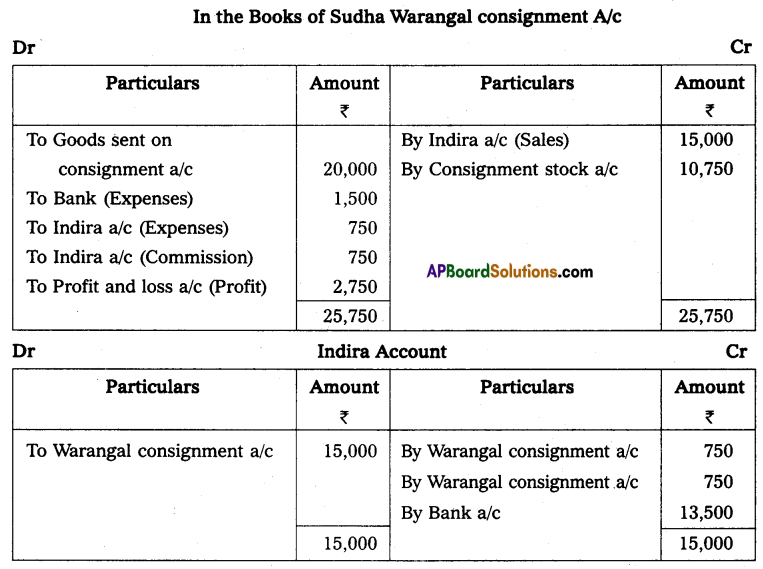
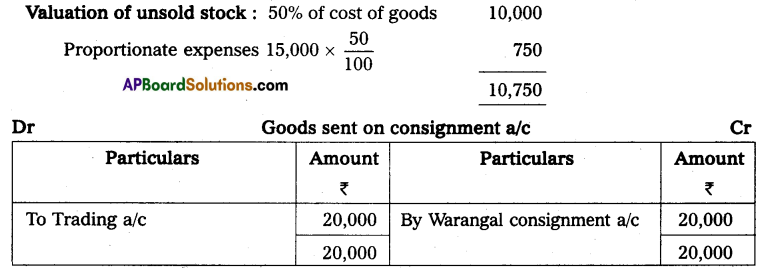
Question 2.
On 1st January 2012, Gopi of Hyderabad consigned goods valued at ₹ 30,000 to Sudheer of Madras. Gopi paid cartage and other expenses ₹ 2,000 on 1st April 2012. Sudheer sent the account sales with the following information:
(a) 50% of the goods sold for ₹ 22,000
(b) Sudheer incurred expenses amounting to ₹ 1,200
(c) Sudheer is entitled to receive a commission @ 5% on sales.
A bank draft was enclosed for the balance due. Prepare the necessary ledger accounts in the books of Gopi.
Solution:
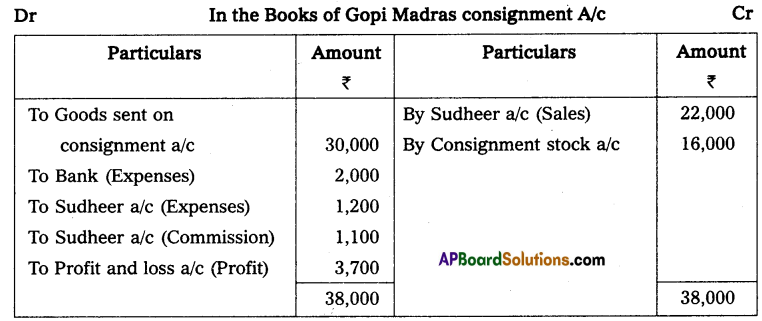
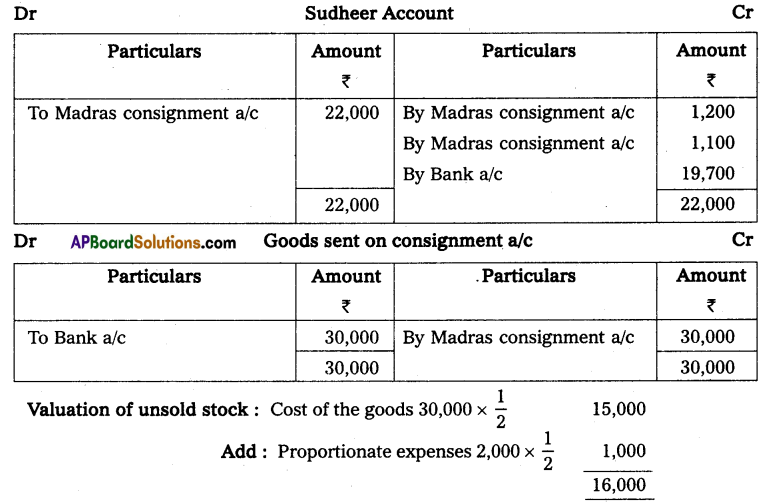
![]()
Question 3.
Sai and Co., of Chennai, consigned 100 Radios to Deepthi and Co. of Hyderabad. The cost of each Ratio was ₹ 500. Sai and Co. paid insurance ₹ 500; Freight ₹ 800. Account sales were received from Deepthi and Co., showing the sale of 80 Radios at ₹ 600 each. The following expenses were deducted by them.
Carriage – ₹ 20
Selling expenses – ₹ 130
Commission = ₹ 2,400
Sai and Co. received a bank draft for the balance due. Prepare important Ledger accounts in the books of Deepthi and Co.
Solution:
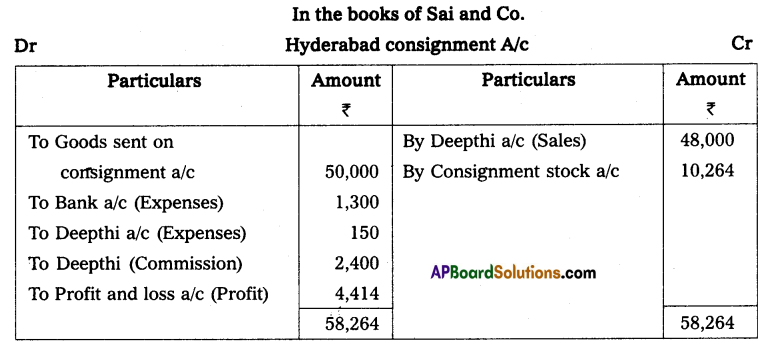
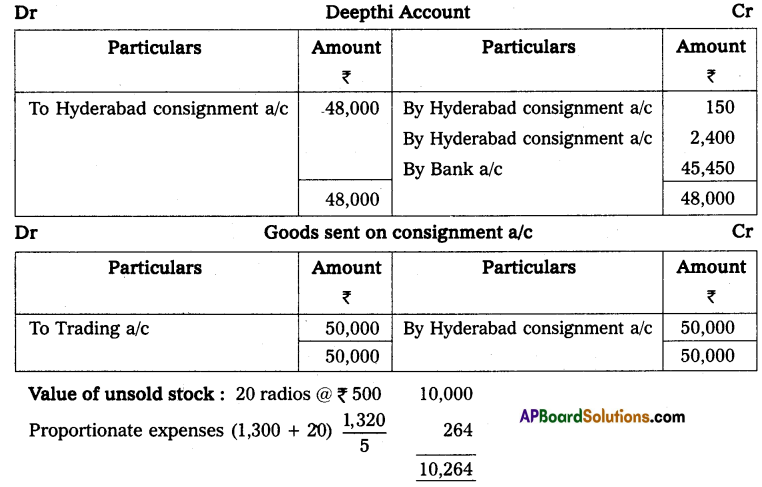

Question 4.
Raj of Bandar sends 200 T V. sets each costing ₹ 15,000 to Rani of Guntur to be sold on a consignment basis. He incurred the following expenses.
Freight ₹ 2,000; Loading and unloading charges ₹ 2,000 and Insurance ₹ 5,000.
Rani sold 185 TVs for ₹ 30,00,000 and paid ₹ 10,000 as shop rent which is to be borne by Raj as per terms and conditions of consignment.
The consignee is entitled to a commission of ₹ 200 per T V. sold. Assuming that Rani settled the account by sending a bank draft to Raj.
Prepare the necessary Ledger Accounts in the books of Raj.
Solution:
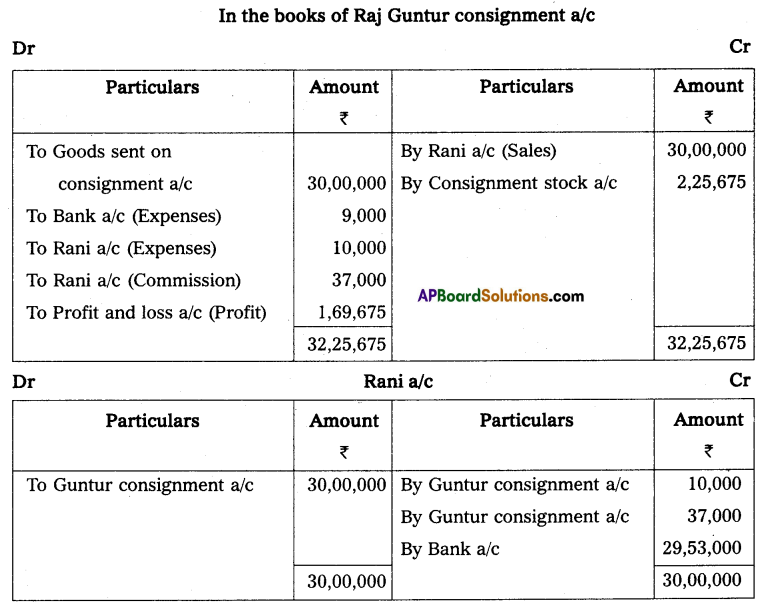
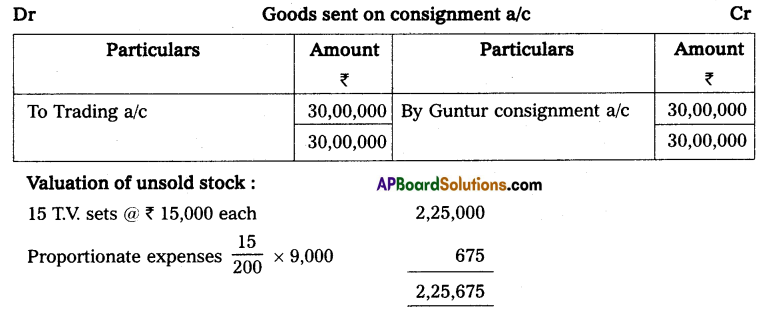
Question 5.
Vishnu of Vijayawada consigned goods valued at ₹ 50,000 to Shiva of Secundrabad. Vishnu paid transport charges ₹ 4,000 and drew a bill of two months on Shiva for ₹ 30,000 as advance. The bill was discounted with bankers for ₹ 29,500. Shiva sent the account sales of the consignment stating that the entire stock was sold for ₹ 72,000; Cartage ₹ 2,000; Commission ₹ 3,000 and a Bank Draft for the balance.
Prepare necessary accounts in the books of Vishnu.
Solution:
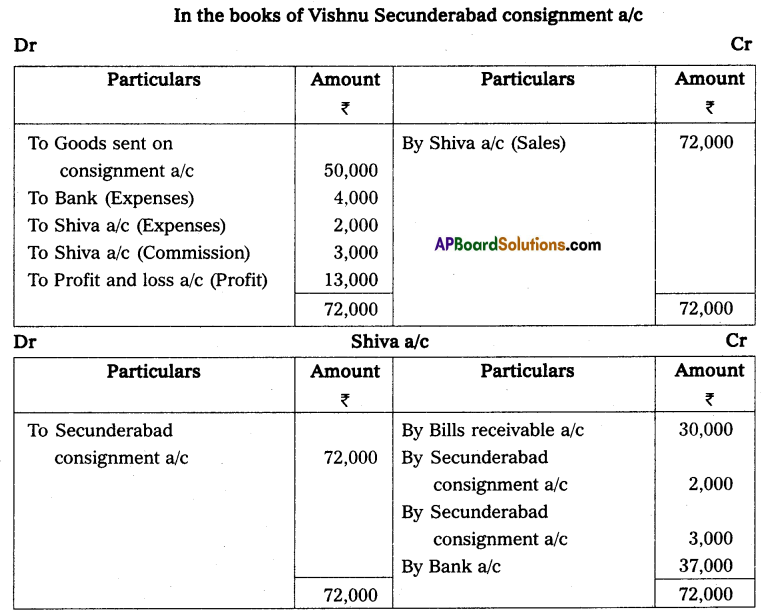
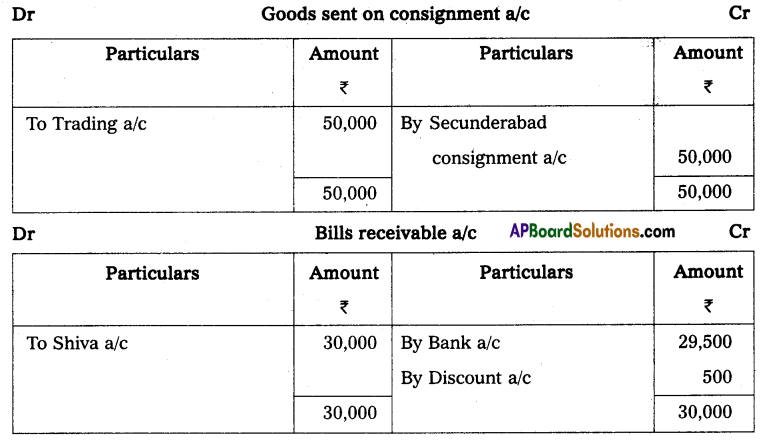
Question 6.
Laxmi of Vijayawada consigned goods worth ₹ 20,000 to his agent Saraswathi of Kodad on consignment Laxmi spent ₹ 1,000 on transport, ₹ 500 on insurance: Saraswathi sent ₹ 5,000 as advance. After two months, Laxmi received the account sales as follows:
(a) Half of the goods were sold for ₹ 24,000
(b) Selling expenses were ₹ 1,200
(c) 10% commission on sales
Give ledger accounts in the books of Laxmi.
Solution:

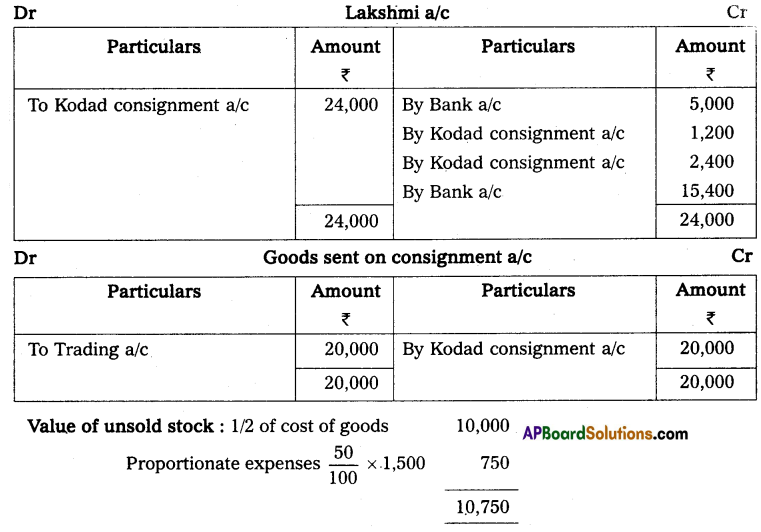
![]()
Question 7.
On 1st January 2009, Sudha of Srinagar consigned goods valued at ₹ 20,000 to Indira of Warangal. Sudha paid cartage and other expenses ₹ 1500. On 1st April 2009, Indira sent account sales with the following information:
(a) 50% of the goods sold for ₹ 15,000
(b) Indira incurred expenses amounting to ₹ 750
(c) Indira is entitled to receive commission @ 5% on sales.
A bank draft was enclosed for the balance due. Prepare the necessary ledger accounts in the books of Sudha.
Answer:
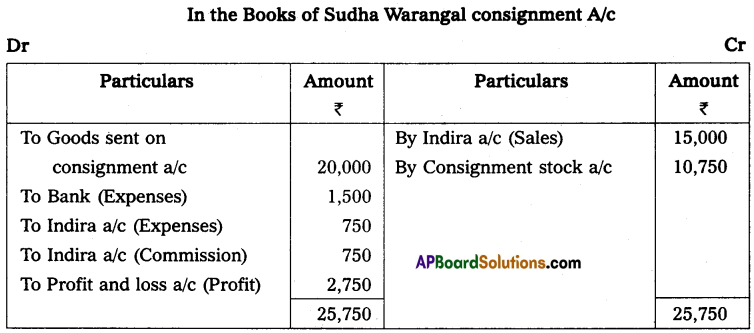
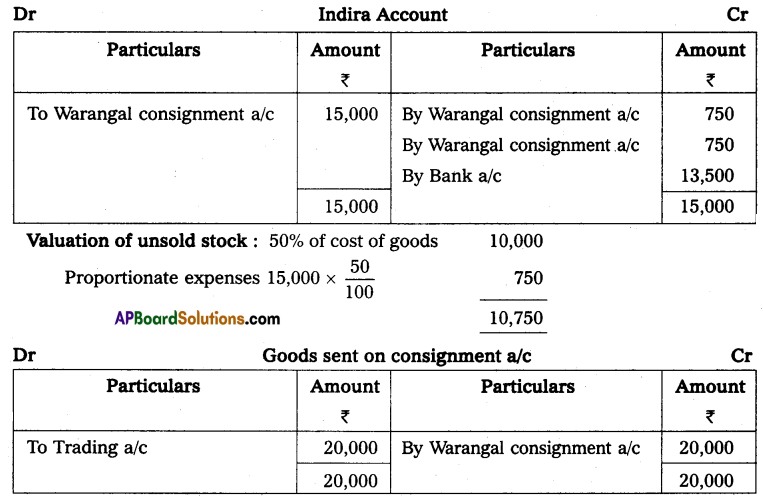
Question 8.
Robert consigned goods to Rahim valued at ₹ 5,000 to be sold on a 5% commission basis. Robert has paid ₹ 500 freight and ₹ 550 towards insurance.
Robert received account sales and a draft for the balance from Rahim showing the following particulars.
Gross Sales – ₹ 7500
Selling Expenses – ₹ 450
Commission – ₹ 375
Pass necessary entries journal in the and prepare ledger accounts in the books of both parties.
Solution:


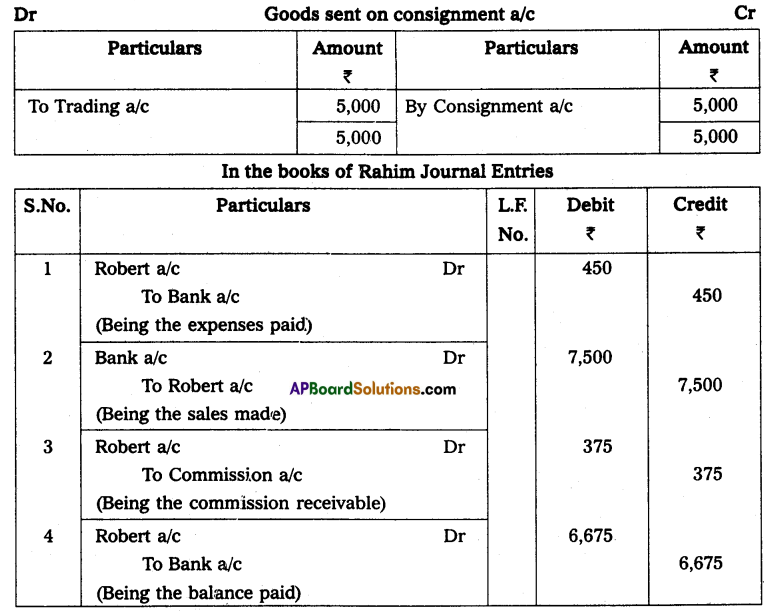

Question 9.
Krishna of Mumbai and Gopal of Chennai is in the consignment business. Gopal sent goods to Krishna for ₹ 10,000. Gopal paid freight ₹ 500. Insurance ₹ 1,500 Krishna met sales expenses ₹ 900, Krishna sold the entire stock for ₹ 20,000 and he is entitled to a commission of 5% on sales.
Write the necessary entries in the books of Gopal and Krishna.
Solution:
In the books of Gopal Journal Entries

In the book of Krishna Journal Entries

![]()
Question 10.
Manikanta of Vijayawada Consigned goods of value of ₹ 20,000 to Ayyappa of Ahmedabad. Manikanta paid forwarding charges of ₹ 1,000 and drew a bill of two months on Ayyappa for ₹ 10,000. The bill was discounted with bankers for ₹ 9,500. Ayyappa sent received the account sales of the consignment stating that the entire stock was sold for ₹ 28,000 agents commission ₹ 2,000 and a bank draft for the balance.
Prepare necessary accounts.
Solution:


Question 11.
Mrs. Murali sent 50 Bicycles on consignment to Mr. Deepthi invoiced at ₹ 800 each on Jan 1st, 2009. She has paid the following expenses:
₹ 1,350 – freight, ₹ 600 – Insurance, ₹ 1,500 – other expenses.
On 5th January, she received a bill from Deepthi for ₹ 40,000. On Feb 20th Deepthi sent an account sales showing that the bicycles have realized ₹ 1,000 each. He incurred expenditures on carriage ₹ 500, warehousing ₹ 460, and ₹ 300 miscellaneous expenses. He charged a commission of 10% on sales. Prepare the books of the consignor and consignee.
Solution:
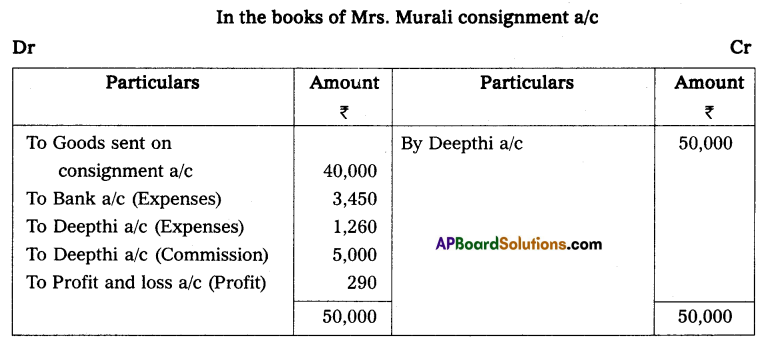

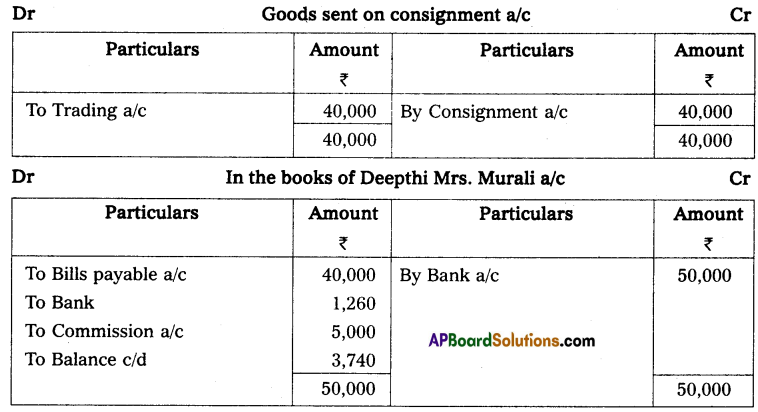
Question 12.
M/s. Robert & Co. of Bangalore consigned 100 cases @ 50 each to Mahathi & Co., of Calcutta. M/s. Robert & Co. spent ₹ 700 on Carriage and paid insurance ₹ 250.
In due course account sales were received with the following details:

Pass necessary entries in the books of both parties.
Solution:
In the books of Robert & Co. Journal Entries
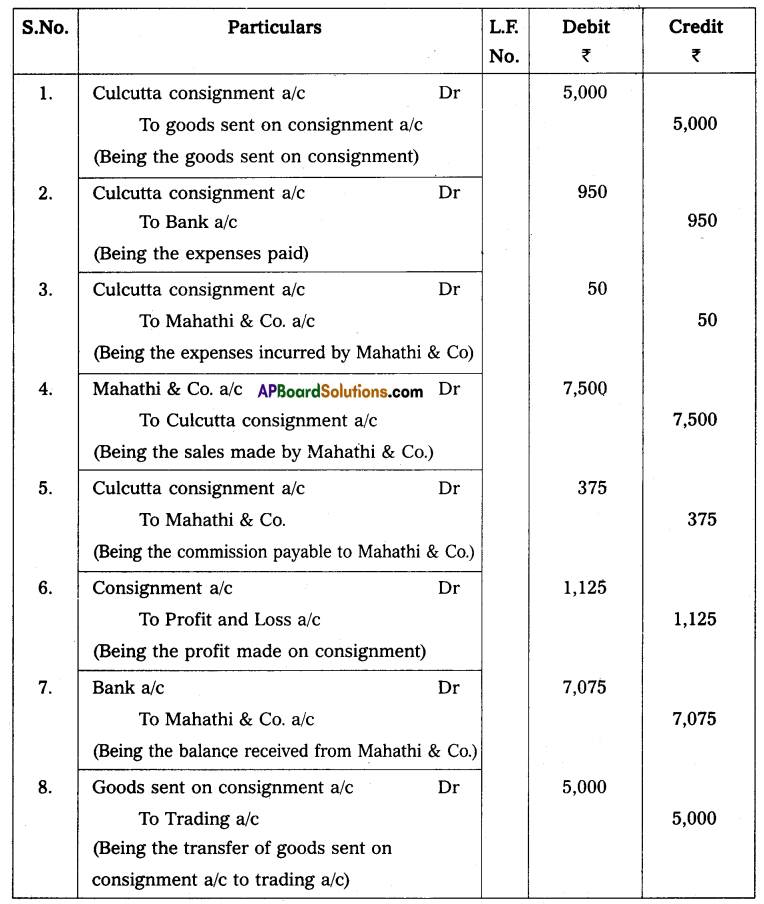
In the books of Mahathi & Co. Journal Entries

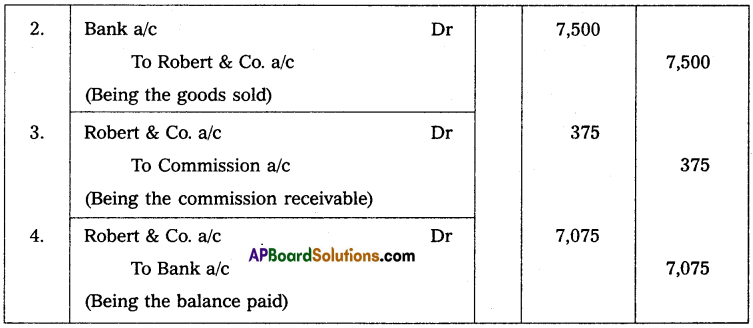
![]()
Question 13.
A & Co., of Hyderabad, consigned 100 Video Games to B & Co., of Delhi to be sold on consignment @ ₹ 500 each. He paid transport ₹ 2,000 and warehouse charges ₹ 3,000. B & Co. sent account sales stating that
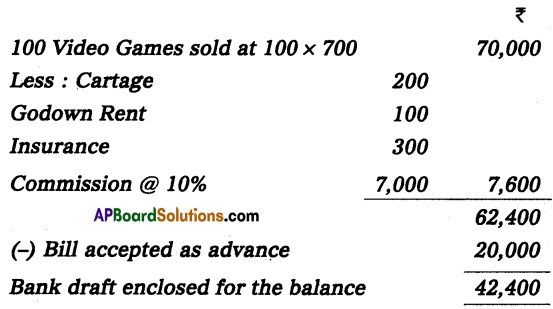
Prepare necessary ledger accounts of both books.
Solution:

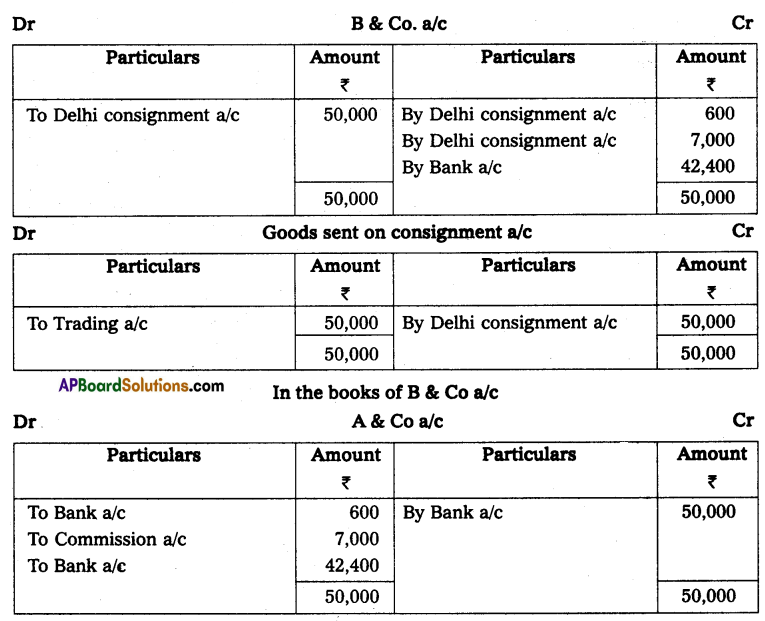
Question 14.
X of Chirala consigned 200 bales of Tobacco @ 250 per bale to V of Vijayawada. X paid cartage of freight etc., ₹ 1,250. X drew a bill on V for 3 months for ₹ 30,000. V sold the entire consignment and rendered account sales showing that the goods realized ₹ 60,000 out of which he deducted his charges amounting to ₹ 400 and commission at 5% on sales. Make entries in the journal and show necessary ledger accounts in the books of both parties.
Solution:
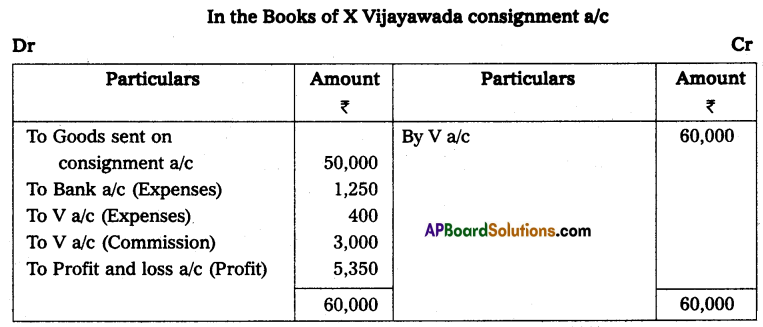




Question 15.
Amar consigned 100 bales of cloth to Akbar at ₹ 5,000 per bale. Amar incurred the following expenses:
Packing and Forwarding Charges – ₹ 500
Insurance in Transit – ₹ 2,000
Akbar received the consignment and sold 80 bales at ₹ 8,000 per bale.
They incurred the following expenses:
Freight and Cartage – ₹ 3,000
Insurance of godown – ₹ 400
Salesmen’s Salary – ₹ 1,600
Ascertain the value of the consignment.
Solution:

![]()
Question 16.
On January 15, 2009, Dharani of Hyderabad sent 400 Bicycles to be sold on consignment to Dheeraj of Warangal. The Bicycles were invoiced at ₹ 1,000 per piece carriage and other expenses amounted to ₹ 6,000.
Dharani received the following account sales.
On 15th March 100 Bicycles were sold at ₹ 1,450 per piece on which 5% commission was charged and ₹ 3,750 were deducted as expenses.
10th April – 150 Bicycles were sold at ₹ 1,400 per piece on which 5% commission was charged and ₹ 2,900 were deducted as expenses incurred after 15 March.
Prepare consignment Accounts and Accounts in the books of Dharani.
Pass the necessary journal entries in the books of Bhagavan and Lakshman.
Solution:

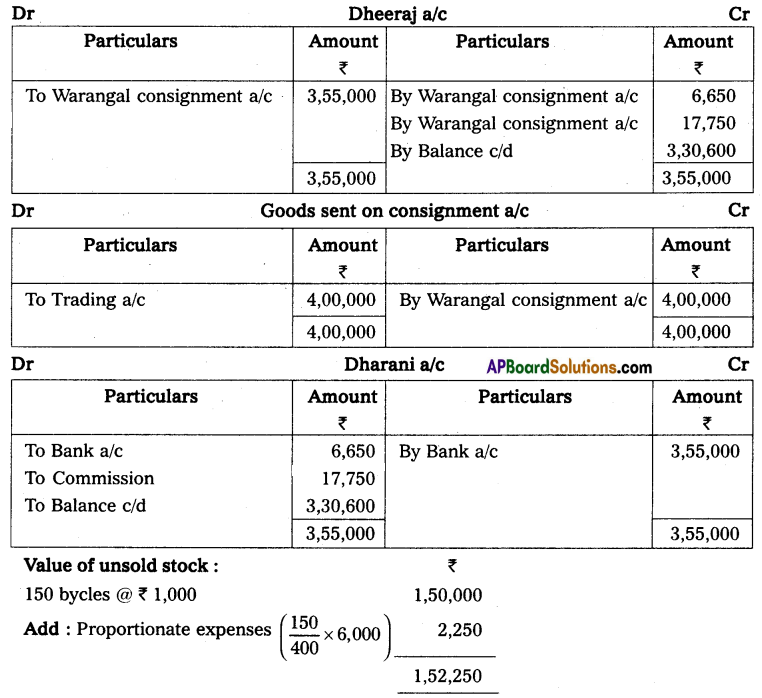
Textual Examples
Question 1.
When the consignee sold total goods.
Sri Manikanta of Guntur consigned goods of the value of ₹ 1,00,000 to their agent Sri Rama of Hyderabad. Sri Manikanta paid loading and insurance in transit ₹ 5,000. On receiving the consignment Sri Rama sent ₹ 50,000 worth of Bank draft as advance.
Sri Rama sent account sales which show the following particulars.
Gross Sales – ₹ 2,00,000
Godown Rent – ₹ 1,000
Advertisements – ₹ 2,000
Commission 10% on sales
Sri Rama attached a bank draft for the balance due to Sri Manikanta your required to pass journal entries and prepare necessary ledger accounts in the books of Sri Manikanta and Sri Rama.
Solution:
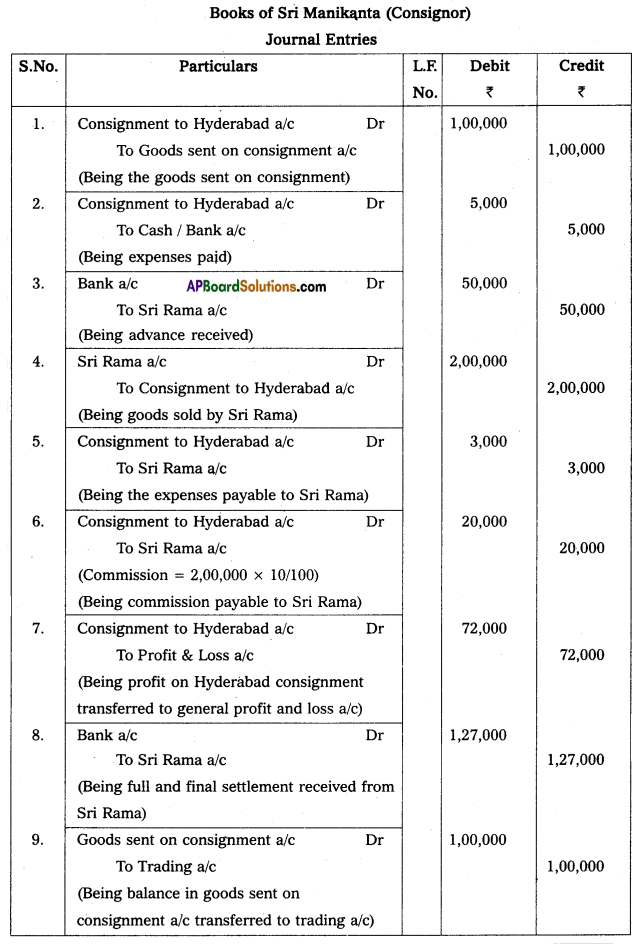
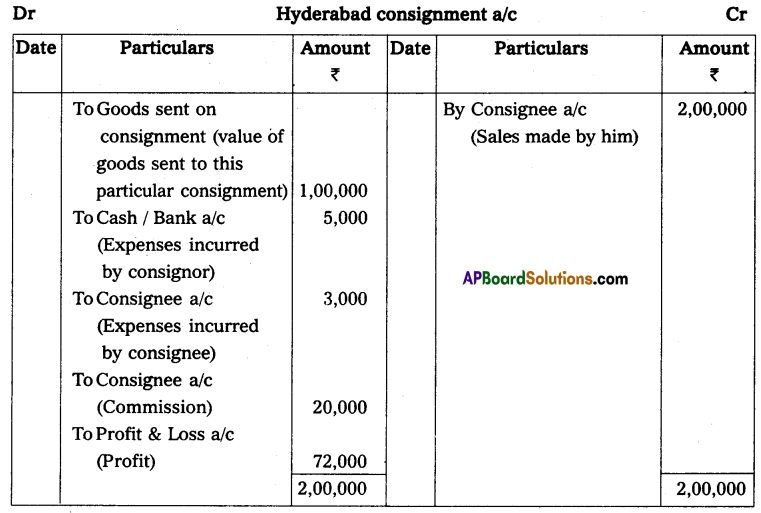


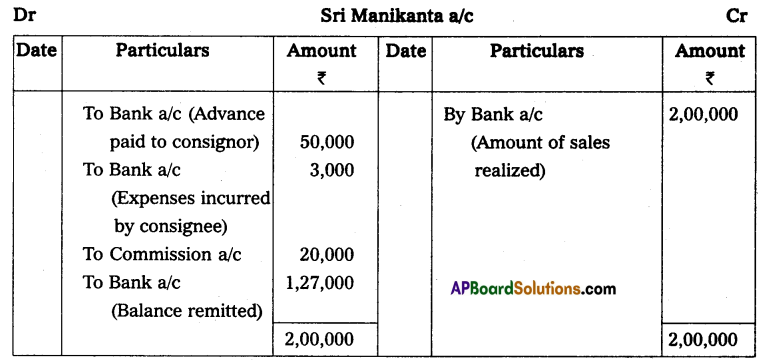
Question 2.
Bhaskar of Rajahmundry consign 500 radio sets each at ₹ 600 to Prasad to Tenali on consignment Bhaskar paid ₹ 12,000 as freight and insurance in transit Bhaskar drawn a bill on Prasad for 3 months for ₹ 1,00,000. Prasad sends account sales which show the following particulars.
(1) Gross sale proceeds are ₹ 4,50,000.
(2) Unloading and godown rent ₹ 10,000.
(3) Commission 5% on Gross sales.
Prasad sends a bank draft for the balance due to Bhaskar.
You are required to prepare necessary ledger accounts in the books of the consignor and consignee.
Solution:



![]()
Question 3.
Kishore of Guntur sends 200 bicycles costing ₹ 1,20,000 to Pavan of Vijayawada on consignment. Kishore spends ₹ 6,000 on freight and insurance in transit. Pavan spent unloading charges ₹ 1,200 godown rent ₹ 800, consignee sold 180 bicycles at ₹ 2,00,000. Calculate the value of the closing stock.
Solution:

Note: Godown rent paid by the consignee is a recurring expense. Hence godown rent is not included in the valuation of closing stock.
Question 4.
X Send 500 radios costing ₹ 1,000 each to Y on consignment. X spends ₹ 50,000 on expenses. Y spent ₹ 12,000 as an advertisement. Consignee sold 400 radios each at ₹ 1,200. Calculate the value of the closing stock.
Solution:

Question 5.
Murali and Co of Warangal consign 500 radio sets to Han and Co of Hyderabad. The cost of each radio is ₹ 500. Murali and Co paid insurance ₹ 10,000 and freights ₹ 15,000. Account sales were received from Hari and Co showing the following particulars.
1. 400 radio sets sold each at ₹ 600.
2. Advertisement expenses ₹ 20,000.
3. Commission 10% on sales.
Hari and Co send a bank draft for the balance due to the consignor.
Show journal entries and ledger accounts in the books of both parties.
Solution:
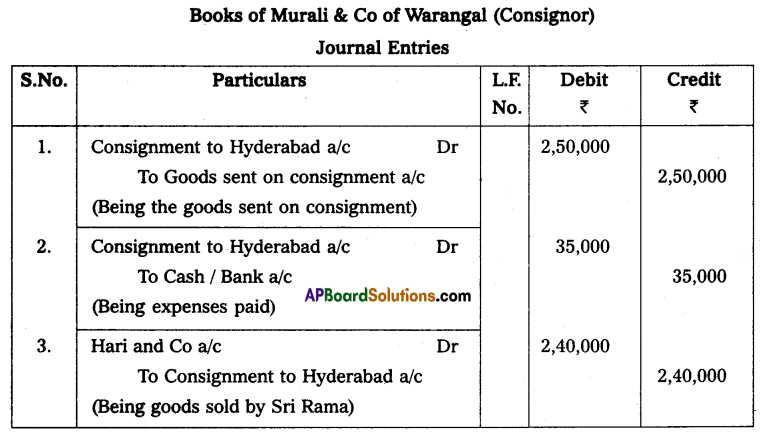
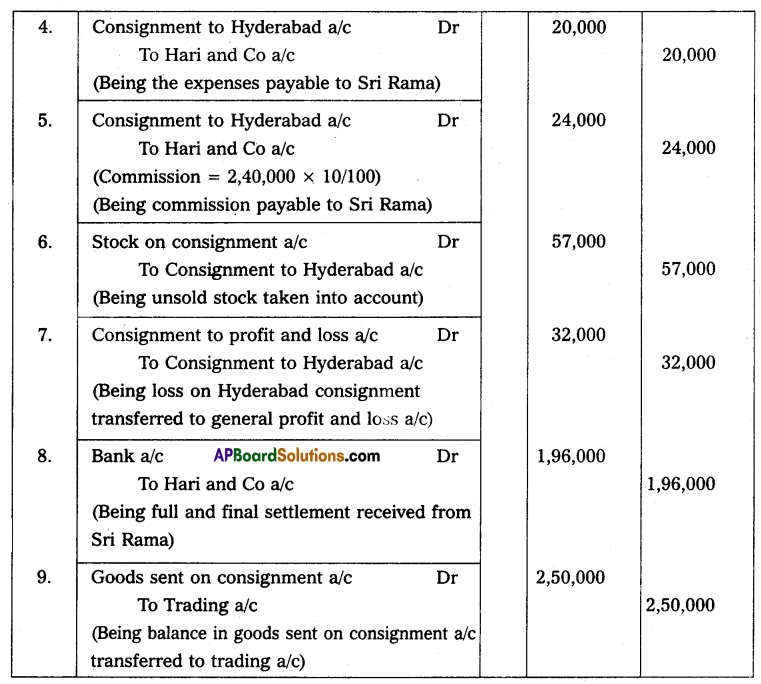
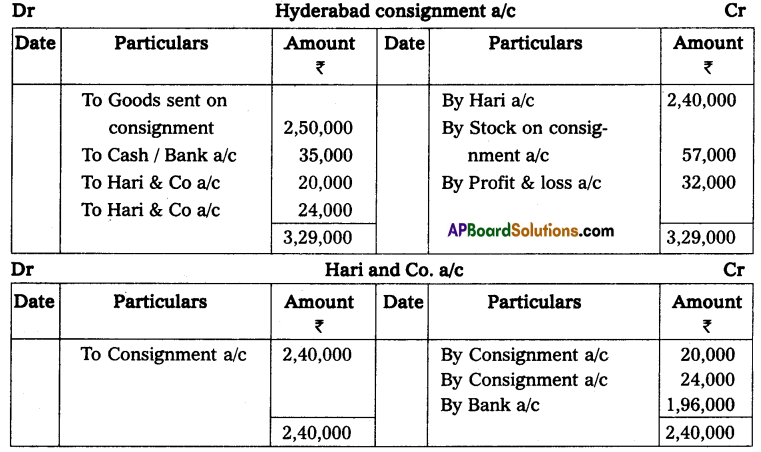
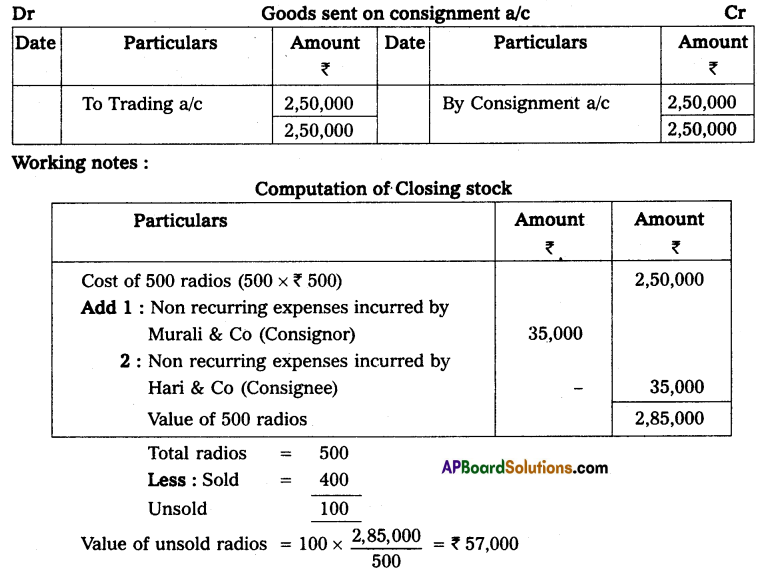
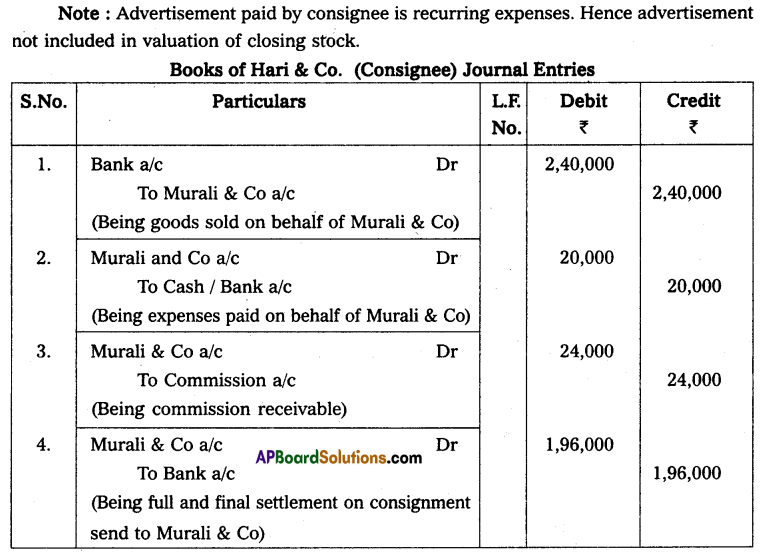

![]()
Question 6.
A dealer is apple consign 1,000 tonnes of apples at a cost of ₹ 10,000 and paid ₹ 2,000 towards freight and insurance. The consignee received 950 tonnes of apples. Consignee sold 500 tonnes of apples. 50 tonnes of apples were treated as an unavoidable loss. Calculate the value of the unsold stock.
Solution:
Cost of 1,000 tonnes of apples = ₹ 10,000
Add: Consignor expenses = ₹ 2,000
Total = ₹ 12,000
Total quantity of goods less normal loss in quantity = 1,000 – 50 = 950 tonnes
Stock of unsold goods = 950 – 500 = 450 tonnes

Value of unsold stock = 12000 × \(\frac{450}{950}\)
= ₹ 5,684.21
= ₹ 5684


